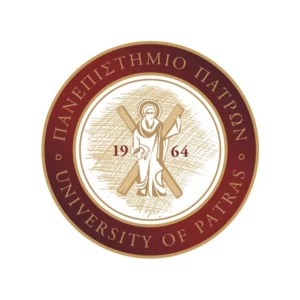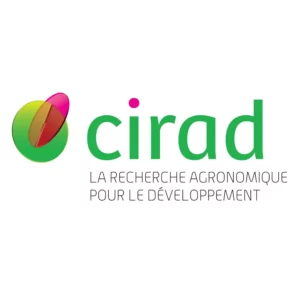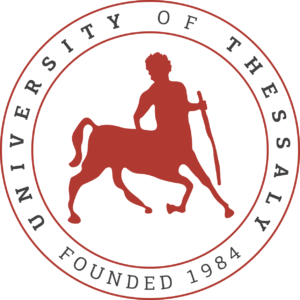Work Program
REACT aims to develop long-term environmentally friendly response strategies and novel sustainable tools to protect fruit and vegetable production and export capacities from two invasive insect pests of EU priority – Bactrocera dorsalis (Bd) and Bactrocera zonata (Bz).
The project will provide enhanced capacity to prevent, identify, monitor, and control these pests. To assess invasion risks, REACT will study the main facilitators and drivers of early invasive processes, the sources and dynamics of adventive populations, and suitable hotspots for species establishment. The project will also develop a novel field-deployable, rapid, and cost-effective mobile solution for interception. Multiple novel reaction strategy components and tools will be developed and integrated to tackle outbreak events by economically sound programs. The project will also conduct experiments to prove the feasibility of an eradication approach for the first time in Europe. The program and its socio-economic impact will be evaluated with stakeholders and multiple actors. The goal is to create rapid response pest eradication capabilities that are pesticide free and safe for the environment.
In Work Package 1 we propose to (a) elucidate the microbial influence on the invasive traits of Bactrocera dorsalis and Bactrocera zonata by adopting a high throughput sequencing and functional metagenomic and metatranscriptomic approach coupled with a culture dependent approach for the identification of microbial fitness drivers, (b) examine population dynamics under different climate change scenarios, (c) prepare a local scale pattern of population dispersal in the anthropised environment using advanced genetic tools, and (d) integrate a modelling-based approach simulating invasion scenarios based on species-specific behavioural and developmental data with a spatio-temporal study of localised trapping data in urban habitats.
Work package leader:
Deliverables:
- Deliverable 1.1 - Genomic, metagenomic & metatranscriptomic data assembled and deposited to public databases
- Deliverable 1.2 - Report on relative contribution of local- and regional dynamics on the range expansion of invasive species
- Deliverable 1.3 - Report on the factors to determine and modulate the behaviour and dispersion of Bactrocera zonata & Bactrocera dorsalis males and females in natural environments
- Deliverable 1.4 - Structure and metabolic profile of the symbiotic communities of the targeted insect species and fitness effect
- Deliverable 1.5 - Report on adaptation and pre- validation of the PESTonFARM prototype submodels for Bactrocera dorsalis & Bactrocera zonata
- Deliverable 1.6 - Report on the overwintering capacity of Bactrocera dorsalis & Bactrocera zonata in three European climatic zones
- Deliverable 1.7 - Characterization of local population structure and seasonal dynamics of Bactrocera zonata and Bactrocera dorsalis
- Deliverable 1.8 - Report on the dynamics of local populations of Bd & Bz in urban landscapes of different complexity
- Deliverable 1.9 - Report on the key drivers of the early, cryptic stages of the invasion that determine the prospects of propagule establishment
In this work package we will decipher the effects of invasion and its ecological impact: i) on individuals by testing the performance and traits of native European species with different diet breadth facing their invasive competitors (Bactrocera dorsalis and Bactrocera zonata); ii) the effects of the gut microbiota community of the invasive species during competition; iii) the impacts on ecosystem functions in looking at the resource pools and supply rates of fleshy fruits, then, we will consider modelling fruitfly survival in hypothetical refugia; iv) finally we propose a meta-analysis of available published data on impact of both target species.
Work package leader:
Deliverables:
- Deliverable 2.1 - Report on the bacterial profile under different temperature scenarios
- Deliverable 2.2 - Report on the protocol for meta- analysis of Bactrocera dorsalis and Bactrocera zonata invasion
- Deliverable 2.3 - Report on the direct ecological impact of Bactrocera dorsalis, Bactrocera zonata to resident European fruitfly species. Practice Abstracts - batch 2
- Deliverable 2.4 - Report on ecological consequences and functional diversity of gut microbial communities under different temperature scenarios
- Deliverable 2.5 - Report on ecological impacts on native wild European host fruits
- Deliverable 2.6 - Report on the ecological and environmental impact of Bactrocera dorsalis and Bactrocera zonata
In Work Package 3 we will develop a) a prototype interception kit (PIK) for rapid onsite interception of fruitfly larvae and b) a metabolomics pipeline to identify male quality markers for improved mass-rearing. We will first establish a protocol for species identification at the larval stage for Bactrocera dorsalis and Bactrocera zonata, and for other EU priority pests, based on the CRISPR/Cas12a technology (Task 3.1). We will exploit both barcoding sequences and the newly developed Tephritid genomic resources (produced by Work Package 4). Once the protocol will be established, we will devise a prototype kit and test it on lab and wild larvae of Bactrocera dorsalis and Bactrocera zonata (Task 3.2). Work Package 3 will also develop a metabolomics pipeline for the analysis of male reproductive organs and gut of Bactrocera dorsalis and Bactrocera zonata to identify markers of mating performance to facilitate quality control operations. We will collect the target tissues from the Ceratitis capitata VIENNA 8 genetic sexing strains, our model strain, and from Bactrocera dorsalis and Bactrocera zonata lab strains, reared on different larval diets and after irradiation (Task 3.3), and then analyse their metabolomes (Task 3.4). The metabolomics pipeline will be developed in VIENNA 8 and then applied to Bactrocera dorsalis and Bactrocera zonata strains, for which quality control parameters will be assessed. The metabolomics data will be cross-linked to evaluate a generic set of quality markers transferrable to other EU priority insect plant pests and that will be provided to mass-rearing facilities worldwide to reduce/optimise efforts in quality control tests, eventually decreasing operational costs.
Work package leader:
Deliverables:
- Deliverable 3.1 - Report on collection of metabolome samples
- Deliverable 3.2 - Report on the protocol for Ceratitis capitata metabolome analysis
- Deliverable 3.3 - Report on the protocol for fruitfly interception
- Deliverable 3.4 - Report on the development and evaluation of the PIK
- Deliverable 3.5 - Report on Ceratitis capitata, Bactrocera dorsalis and Bactrocera zonata male metabolomes and evaluation of markers for fruitfly QC
Work Package 4 will develop precise, rapid, and reliable methods to de novo construct genetic sexing strains for target species. Latest sequencing and bioinformatic technologies will be used to build a generic and transferable pipeline to characterise fruitfly Y chromosomes and find suitable areas for genetic engineering (Task 4.1). The pipeline will be based on genomic and transcriptomic datasets already available from studies in Ceratitis capitata and Bactrocera oleae by our participants, will be first established in Ceratitis capitata, and then transferred to Bactrocera dorsalis and Bactrocera zonata. A generic, genetic engineering pipeline to insert endogenous sequences on Y chromosomes via CRISPR/Cas-based genome editing, called the "neoclassical method", will be developed, and tested in Ceratitis capitata (Task 4.2). The gene to insert on the Y will be based on the highly conserved pupal color white pupae gene, whose knockout results in white instead of the naturally brown pupae. This gene has already been mutated on autosomes. It will now be rescued male-specifically by providing the Y chromosome with a white pupae rescue allele. Once developed, genetic sexing strains pupae can be sorted for white (female) versus brown (male) pupae, and male-only populations are sterilised for release. The performance of neoclassical genetic sexing strains will be compared to the currently in use classical Ceratitis capitata genetic sexing strains (VIENNA 8). After establishing the proof-of-concept methodology in Ceratitis capitata, Work Package 4 will ambitiously translate both pipelines to generate genetic sexing strains in Bactrocera dorsalis and Bactrocera zonata (Task 4.3 and 4.4). The resulting strains will be evaluated for fitness parameters in our laboratories (Task 4.4) and tested under mass-rearing conditions (Task 4.4).
Work package leader:
Deliverables:
- Deliverable 4.1 - Report on Ceratitis capitata, Bactrocera zonata and Bactrocera dorsalis Y chromosome target sites
- Deliverable 4.2 - Report on marker integration on Y chromosome sites via CRISPR HDR in Ceratitis capitata
- Deliverable 4.3 - Report on Y chromosome bioinformatics and transcriptome-wide QC-marker analysis in Ceratitis capitata
- Deliverable 4.4 - Report on improved computational pipelines, high resolution Tephritid genomic datasets and transcriptome-wide QC- markers in Bactrocera dorsalis and Bactrocera zonata
- Deliverabale 4.5 - Report on the development and fitness evaluation of a neoclassical wp-based GSS in Ceratitis capitata, Bactrocera dorsalis and Bactrocera zonata
Work Package 5 will develop a rapid and efficient response to outbreaks aiming to prohibit establishment and eliminate dispersion to different areas and countries. To address objective 1, we use Ceratitis capitata, a model species for SIT, that exists in low density populations in well-characterised areas of Northern Greece that resemble early stages of invasion (establishment of small, dispersed populations). Data regarding Ceratitis capitata dispersion in a temperate area of northern Greece will be used to select appropriate pilot sites. These sites will be thoroughly characterised in terms of ecological and climatic properties that may affect Ceratitis capitata population growth and dispersion (Task 5.3). The gathered data and the background information will be used to generate outbreaks containment scenarios, based on the PESTonFARM platform (Task 5.4), which will be pilot-tested for two consecutive years (Task 5.5). An aggressive response strategy will be tested in European orchards against fruitfly. Following simulation experiments, we will assess, if the Ceratitis capitata-developed and tested strategy can be adapted for Bactrocera dorsalis and Bactrocera zonata (Task 5.6). To establish the symbiont-enhanced SIT as the main tool of a fruitfly outbreak containment strategy and also for integrated pest management, a novel emergency-response rearing facility for the production of enhanced Ceratitis capitata males will be established in Task 5.1, which could easily be adapted to both Bactrocera dorsalis and Bactrocera zonata. The performance and quality of produced enhanced males will be screened through laboratory, field cage, and open field trials (Task 5.2) and their integration into the outbreak containment scenarios in Task 5.4 and Task 5.6. Work package 5 will engage stakeholders including phytosanitary inspectors, fruit growers' organisations, and policy implementation officials.
Work package leader:
Deliverables:
- Deliverable 5.1 - Technical documentation for the rearing of enhanced fruitfly males at a medium- scale, emergency-response facility including a cost benefit analysis. Practice abstracts - batch 1
- Deliverable 5.2 - Report on the detailed characterization of the pilot sites
- Deliverable 5.3 - Report on the performance of various outbreak containment scenarios based on thorough population growth modelling
- Deliverable 5.4 - Report regarding the field quality of the produced males
- Deliverable 5.5 - Report on the efficacy of the outbreak containment trials
- Deliverable 5.6 - Report on the performance of the developed Ceratitis capitata containment strategy
Work package 6 will involve multiple stakeholders from the beginning through workshops (in part online) and questionnaires to have fair estimates of costs and benefits as a baseline. An important dimension will be assessing the farmers' and other stakeholders' perceptions regarding invasive pests and the damage they cause, as this will affect the actions and detail the valuation of cost and benefits. Another dimension is assessing their perceptions regarding various control methods and the facilitating factors and obstacles to uptake certain tools/strategies. We will conduct meetings with stakeholders in Europe and South Africa. In South Africa, Bactrocera dorsalis is already present, and SIT-based methods are tested in other species, thus providing vital information to refine the data on cost and benefits and the acceptability of SIT-based strategies, e.g., pest-free vs infested areas (Task 6.1 and Task 6.2). The work package will review existing literature and data on damage and control costs, current concepts in terms of economic analysis and new models and explore how they can be linked to the economic analysis model (Task 6.3). Work package 6 will then conduct a multi-dimensional evaluation of SIT-based rapid eradication strategies to tackle invasive fruitfly to foster economically and environmentally sound pest management. This requires an assessment of the impacts of diverse fruitfly invasion and control scenarios. First, we will identify the range of impacts of outcomes from the REACT project methods, tools, kit, strategies, and standard operating procedures, followed by their valuation and comparison to existing parameters. To identify impacts, work package 6 is consulting work packages 2- 5, and information will be gathered about the various costs components of the developed REACT strategies. We will feed those data for cost and benefit analysis into a previously developed economic model and adapt it by incorporating a range of dimensions related to the impact of invasion on fruit production, alternative hosts /ecology, fruit marketing, comparison to other control strategies such as pesticide-based strategies, and integrated pest management (Task 6.4). Using the economic model and the data/information collected, an economic analysis of the REACT strategies will be performed (Task 6.5) and explicitly quantified for Bactrocera dorsalis in South Africa (Task 6.6).
Work package leader:
Deliverables:
- Deliverable 6.1 - Develop a list of parameters relevant for the socio-economic assessment of the project developed rapid response strategies
- Deliverable 6.2 - Report on stakeholder perceptions on Bactrocera dorsalis and Bactrocera zonata impact and management strategies
- Deliverable 6.3 - Quick Intervention Guide based on questions and checklists to structure possible interventions in diverse threat scenarios. Practice abstracts - batch 3
- Deliverable 6.4 - Report on cost-benefit of SIT-based control strategies for Bactrocera dorsalis in pest free and infested areas in SA
Work package 7 will spread the project and its results to the public. This includes the general external project communication on different channels (e.g., website, social media, videos), the targeted dissemination to science and politics as well as the exploitation of the project results on commercial and non-commercial ways that ensure the outputs and lessons learned from the project to contribute to a more resilient agriculture. At the beginning a comprehensive strategy and technical infrastructure is developed as a basis (Task 7.1) for the following implementation of the different communication measures (Task 7.2) ensuring the widest possible awareness of the project. The exploitation of the project results will consist of developing commercial and non-commercial exploitation scenarios, defining a strategy for utilisation of the project findings in practice and evaluating the commercial use of results under patent protection (Task 7.3). All project partners will have their stake in the project communication measures and provide information to the work package leader. In a series of communications workshops the mutual key messaging, narration and communication approach will be continuously developed and iterated during the project.
Work package leader:
Deliverables:
- Deliverable 7.1 - Project website developed and setup
- Deliverable 7.2 - Dissemination and exploitation plan including communication activities (DECP), (* = periodic updates in m12, m24, m36)
- Deliverable 7.3 - Data management plan (DMP) developed (* = periodic updates in m18, m36)
- Deliverable 7.4 - Training materials for partner workshops ready to use
- Deliverable 7.5 - Final report on dissemination, communication, and exploitation activities
- Deliverable 7.6 - Dissemination and exploitation plan including communication activities (DECP), periodic update 1
- Deliverable 7.7 - Dissemination and exploitation plan including communication activities (DECP), periodic update 2
- Deliverable 7.8 - Dissemination and exploitation plan including communication activities (DECP), periodic update 3
- Deliverable 7.9 - Data management plan (DMP) developed, periodic update 1
- Deliverable 7.10 - Data management plan (DMP) developed, periodic update 2
Coordination of REACT will require sound governance and an adequate management structure to ensure the most efficient collaboration between all partners, stakeholders, and the European Commission. This includes governance to monitor project progress towards set objectives, to anticipate possible hurdles, to solve such issues and to ensure fulfilment of the highest ethical and biosafety standards by all partners.
Deliverables:
- Deliverable 8.1 - Report on setting up technical and financial structure and Kick-off meeting
- Deliverable 8.2 - Intranet and Project management tools
- Deliverable 8.3 - Periodic minutes from GA (* = periodic updates in m12, m24, m36, m48)
- Deliverable 8.4 - Periodic minutes from GA, update 1
- Deliverable 8.5 - Periodic minutes from GA, update 2
Deliverable 8.6 - Periodic minutes from GA, update 3 - Deliverable 8.7 - Periodic minutes from GA, update 4
This work package sets out the 'ethics requirements' that the project must comply with.
Deliverables:
- Deliverable 9.1 - OEI - Requirement No. 1
- Deliverable 9.2 - OEI - Requirement No. 2
- Deliverable 9.3 - OEI - Requirement No. 3
- Deliverable 9.4 - OEI - Requirement No. 4
Project Milestones
Milestone 0.1 - Consortium agreement
Milestone 0.2 - Kick-off meeting (KOM)
Milestone 6.1 - Relevance of selected list of parameters for socio-economic analysis for the project developed tools and strategies validated
Milestone 7.1 - Plan for dissemination & exploitation including communication developed
Milestone 4.1 - Initial bioinformatic pipeline for Work Package 4 generation of Genetic Sexing Strains in Ceratitis capitata developed
Milestone 2.1 - Amplicon sequencing pipeline developed and microbial profiles determined
Milestone 1.1 - Sequencing for population diversity and microbiome studies completed
Milestone 2.2 - Acquisition of data for meta-analysis on ecological impacts of Bactrocera dorsalis and Bactrocera zonata conducted
Milestone 3.1 - Metabolomics pipeline and male quality markers in Ceratitis capitata developed
Milestone 4.2 - Y chromosome targeting developed and evaluated as proof-of-principle in Ceratitis capitata
Milestone 5.1 - Emergency-response rearing facility established and productivity assured
Milestone 1.2 - Parameters for population dispersal studies collected
Milestone 1.3 - Parameters for developing simulation models for Bactrocera dorsalis and Bactrocera zonata collected
Milestone 3.2 - Fruitfly interception protocol developed and evaluated
{"type":"elementor","siteurl":"https://react-insect.eu/wp-json/","elements":[{"id":"303a750","elType":"section","isInner":false,"isLocked":false,"settings":{"hover_parallax":[{"layer_position_vr":{"unit":"%","size":30},"layer_position_hr":{"unit":"%","size":40},"_id":"7ec3a86","repeater_bg_image":{"url":"https://react-insect.eu/wp-content/plugins/elementor/assets/images/placeholder.png","id":"","size":""},"layer_width":100,"layer_position_hr_tablet":{"unit":"px","size":"","sizes":[]},"layer_position_hr_mobile":{"unit":"px","size":"","sizes":[]},"layer_position_vr_tablet":{"unit":"px","size":"","sizes":[]},"layer_position_vr_mobile":{"unit":"px","size":"","sizes":[]},"data_depth":0.4},{"layer_position_vr":{"unit":"%","size":60},"layer_position_hr":{"unit":"%","size":20},"_id":"bd5dcee","repeater_bg_image":{"url":"https://react-insect.eu/wp-content/plugins/elementor/assets/images/placeholder.png","id":"","size":""},"layer_width":100,"layer_position_hr_tablet":{"unit":"px","size":"","sizes":[]},"layer_position_hr_mobile":{"unit":"px","size":"","sizes":[]},"layer_position_vr_tablet":{"unit":"px","size":"","sizes":[]},"layer_position_vr_mobile":{"unit":"px","size":"","sizes":[]},"data_depth":0.4}],"element_pack_agbg_color_list":[{"_id":"146bbcf"},{"start_color":"#567445","end_color":"#1D1BE0","_id":"d41266d"}],"eael_image_masking_custom_clip_path":"clip-path: polygon(50% 0%, 80% 10%, 100% 35%, 100% 70%, 80% 90%, 50% 100%, 20% 90%, 0% 70%, 0% 35%, 20% 10%);","eael_image_masking_custom_clip_path_hover":"clip-path: polygon(50% 0%, 80% 10%, 100% 35%, 100% 70%, 80% 90%, 50% 100%, 20% 90%, 0% 70%, 0% 35%, 20% 10%);","_title":"","layout":"boxed","content_width":{"unit":"px","size":"","sizes":[]},"content_width_tablet":{"unit":"px","size":"","sizes":[]},"content_width_mobile":{"unit":"px","size":"","sizes":[]},"gap":"default","gap_columns_custom":{"unit":"px","size":"","sizes":[]},"gap_columns_custom_tablet":{"unit":"px","size":"","sizes":[]},"gap_columns_custom_mobile":{"unit":"px","size":"","sizes":[]},"height":"default","custom_height":{"unit":"px","size":400,"sizes":[]},"custom_height_tablet":{"unit":"px","size":"","sizes":[]},"custom_height_mobile":{"unit":"px","size":"","sizes":[]},"column_position":"middle","content_position":"","overflow":"","stretch_section":"","html_tag":"","structure":"10","background_background":"","background_color":"","background_color_stop":{"unit":"%","size":0,"sizes":[]},"background_color_stop_tablet":{"unit":"%"},"background_color_stop_mobile":{"unit":"%"},"background_color_b":"#f2295b","background_color_b_stop":{"unit":"%","size":100,"sizes":[]},"background_color_b_stop_tablet":{"unit":"%"},"background_color_b_stop_mobile":{"unit":"%"},"background_gradient_type":"linear","background_gradient_angle":{"unit":"deg","size":180,"sizes":[]},"background_gradient_angle_tablet":{"unit":"deg"},"background_gradient_angle_mobile":{"unit":"deg"},"background_gradient_position":"center center","background_gradient_position_tablet":"","background_gradient_position_mobile":"","background_image":{"url":"","id":"","size":""},"background_image_tablet":{"url":"","id":"","size":""},"background_image_mobile":{"url":"","id":"","size":""},"background_position":"","background_position_tablet":"","background_position_mobile":"","background_xpos":{"unit":"px","size":0,"sizes":[]},"background_xpos_tablet":{"unit":"px","size":0,"sizes":[]},"background_xpos_mobile":{"unit":"px","size":0,"sizes":[]},"background_ypos":{"unit":"px","size":0,"sizes":[]},"background_ypos_tablet":{"unit":"px","size":0,"sizes":[]},"background_ypos_mobile":{"unit":"px","size":0,"sizes":[]},"background_attachment":"","background_repeat":"","background_repeat_tablet":"","background_repeat_mobile":"","background_size":"","background_size_tablet":"","background_size_mobile":"","background_bg_width":{"unit":"%","size":100,"sizes":[]},"background_bg_width_tablet":{"unit":"px","size":"","sizes":[]},"background_bg_width_mobile":{"unit":"px","size":"","sizes":[]},"background_video_link":"","background_video_start":"","background_video_end":"","background_play_once":"","background_play_on_mobile":"","background_privacy_mode":"","background_video_fallback":{"url":"","id":"","size":""},"background_slideshow_gallery":[],"background_slideshow_loop":"yes","background_slideshow_slide_duration":5000,"background_slideshow_slide_transition":"fade","background_slideshow_transition_duration":500,"background_slideshow_background_size":"","background_slideshow_background_size_tablet":"","background_slideshow_background_size_mobile":"","background_slideshow_background_position":"","background_slideshow_background_position_tablet":"","background_slideshow_background_position_mobile":"","background_slideshow_lazyload":"","background_slideshow_ken_burns":"","background_slideshow_ken_burns_zoom_direction":"in","handle_slideshow_asset_loading":"","background_hover_background":"","background_hover_color":"","background_hover_color_stop":{"unit":"%","size":0,"sizes":[]},"background_hover_color_stop_tablet":{"unit":"%"},"background_hover_color_stop_mobile":{"unit":"%"},"background_hover_color_b":"#f2295b","background_hover_color_b_stop":{"unit":"%","size":100,"sizes":[]},"background_hover_color_b_stop_tablet":{"unit":"%"},"background_hover_color_b_stop_mobile":{"unit":"%"},"background_hover_gradient_type":"linear","background_hover_gradient_angle":{"unit":"deg","size":180,"sizes":[]},"background_hover_gradient_angle_tablet":{"unit":"deg"},"background_hover_gradient_angle_mobile":{"unit":"deg"},"background_hover_gradient_position":"center center","background_hover_gradient_position_tablet":"","background_hover_gradient_position_mobile":"","background_hover_image":{"url":"","id":"","size":""},"background_hover_image_tablet":{"url":"","id":"","size":""},"background_hover_image_mobile":{"url":"","id":"","size":""},"background_hover_position":"","background_hover_position_tablet":"","background_hover_position_mobile":"","background_hover_xpos":{"unit":"px","size":0,"sizes":[]},"background_hover_xpos_tablet":{"unit":"px","size":0,"sizes":[]},"background_hover_xpos_mobile":{"unit":"px","size":0,"sizes":[]},"background_hover_ypos":{"unit":"px","size":0,"sizes":[]},"background_hover_ypos_tablet":{"unit":"px","size":0,"sizes":[]},"background_hover_ypos_mobile":{"unit":"px","size":0,"sizes":[]},"background_hover_attachment":"","background_hover_repeat":"","background_hover_repeat_tablet":"","background_hover_repeat_mobile":"","background_hover_size":"","background_hover_size_tablet":"","background_hover_size_mobile":"","background_hover_bg_width":{"unit":"%","size":100,"sizes":[]},"background_hover_bg_width_tablet":{"unit":"px","size":"","sizes":[]},"background_hover_bg_width_mobile":{"unit":"px","size":"","sizes":[]},"background_hover_video_link":"","background_hover_video_start":"","background_hover_video_end":"","background_hover_play_once":"","background_hover_play_on_mobile":"","background_hover_privacy_mode":"","background_hover_video_fallback":{"url":"","id":"","size":""},"background_hover_slideshow_gallery":[],"background_hover_slideshow_loop":"yes","background_hover_slideshow_slide_duration":5000,"background_hover_slideshow_slide_transition":"fade","background_hover_slideshow_transition_duration":500,"background_hover_slideshow_background_size":"","background_hover_slideshow_background_size_tablet":"","background_hover_slideshow_background_size_mobile":"","background_hover_slideshow_background_position":"","background_hover_slideshow_background_position_tablet":"","background_hover_slideshow_background_position_mobile":"","background_hover_slideshow_lazyload":"","background_hover_slideshow_ken_burns":"","background_hover_slideshow_ken_burns_zoom_direction":"in","background_hover_transition":{"unit":"px","size":0.3,"sizes":[]},"wpr_enable_particles":"no","which_particle":"wpr_particle_json_custom","wpr_particle_json_custom":"{\"particles\":{\"number\":{\"value\":80,\"density\":{\"enable\":true,\"value_area\":800}},\"color\":{\"value\":\"#000000\"},\"shape\":{\"type\":\"circle\",\"stroke\":{\"width\":0,\"color\":\"#000000\"},\"polygon\":{\"nb_sides\":5},\"image\":{\"src\":\"img/github.svg\",\"width\":100,\"height\":100}},\"opacity\":{\"value\":0.5,\"random\":false,\"anim\":{\"enable\":false,\"speed\":1,\"opacity_min\":0.1,\"sync\":false}},\"size\":{\"value\":3,\"random\":true,\"anim\":{\"enable\":false,\"speed\":40,\"size_min\":0.1,\"sync\":false}},\"line_linked\":{\"enable\":true,\"distance\":150,\"color\":\"#000000\",\"opacity\":0.4,\"width\":1},\"move\":{\"enable\":true,\"speed\":6,\"direction\":\"none\",\"random\":false,\"straight\":false,\"out_mode\":\"out\",\"bounce\":false,\"attract\":{\"enable\":false,\"rotateX\":600,\"rotateY\":1200}}},\"interactivity\":{\"detect_on\":\"window\",\"events\":{\"onhover\":{\"enable\":true,\"mode\":\"repulse\"},\"onclick\":{\"enable\":true,\"mode\":\"push\"},\"resize\":true},\"modes\":{\"grab\":{\"distance\":400,\"line_linked\":{\"opacity\":1}},\"bubble\":{\"distance\":400,\"size\":40,\"duration\":2,\"opacity\":8,\"speed\":3},\"repulse\":{\"distance\":200,\"duration\":0.4},\"push\":{\"particles_nb\":4},\"remove\":{\"particles_nb\":2}}},\"retina_detect\":true}","wpr_enable_jarallax":"no","speed":1.4,"scroll_effect":"scroll","bg_image":{"url":"https://react-insect.eu/wp-content/plugins/elementor/assets/images/placeholder.png","id":"","size":""},"wpr_enable_parallax_hover":"no","invert_direction":"no","scalar_speed":{"unit":"%","size":10,"sizes":[]},"enable_sticky_section":"no","enable_on_devices":["desktop_sticky"],"position_type":"sticky","sticky_type":"sticky","position_location":"top","position_offset":0,"position_offset_tablet":0,"position_offset_mobile":0,"wpr_z_index":10,"custom_breakpoints":"default","active_breakpoints":["mobile_sticky","tablet_sticky","desktop_sticky"],"background_overlay_background":"","background_overlay_color":"","background_overlay_color_stop":{"unit":"%","size":0,"sizes":[]},"background_overlay_color_stop_tablet":{"unit":"%"},"background_overlay_color_stop_mobile":{"unit":"%"},"background_overlay_color_b":"#f2295b","background_overlay_color_b_stop":{"unit":"%","size":100,"sizes":[]},"background_overlay_color_b_stop_tablet":{"unit":"%"},"background_overlay_color_b_stop_mobile":{"unit":"%"},"background_overlay_gradient_type":"linear","background_overlay_gradient_angle":{"unit":"deg","size":180,"sizes":[]},"background_overlay_gradient_angle_tablet":{"unit":"deg"},"background_overlay_gradient_angle_mobile":{"unit":"deg"},"background_overlay_gradient_position":"center center","background_overlay_gradient_position_tablet":"","background_overlay_gradient_position_mobile":"","background_overlay_image":{"url":"","id":"","size":""},"background_overlay_image_tablet":{"url":"","id":"","size":""},"background_overlay_image_mobile":{"url":"","id":"","size":""},"background_overlay_position":"","background_overlay_position_tablet":"","background_overlay_position_mobile":"","background_overlay_xpos":{"unit":"px","size":0,"sizes":[]},"background_overlay_xpos_tablet":{"unit":"px","size":0,"sizes":[]},"background_overlay_xpos_mobile":{"unit":"px","size":0,"sizes":[]},"background_overlay_ypos":{"unit":"px","size":0,"sizes":[]},"background_overlay_ypos_tablet":{"unit":"px","size":0,"sizes":[]},"background_overlay_ypos_mobile":{"unit":"px","size":0,"sizes":[]},"background_overlay_attachment":"","background_overlay_repeat":"","background_overlay_repeat_tablet":"","background_overlay_repeat_mobile":"","background_overlay_size":"","background_overlay_size_tablet":"","background_overlay_size_mobile":"","background_overlay_bg_width":{"unit":"%","size":100,"sizes":[]},"background_overlay_bg_width_tablet":{"unit":"px","size":"","sizes":[]},"background_overlay_bg_width_mobile":{"unit":"px","size":"","sizes":[]},"background_overlay_video_link":"","background_overlay_video_start":"","background_overlay_video_end":"","background_overlay_play_once":"","background_overlay_play_on_mobile":"","background_overlay_privacy_mode":"","background_overlay_video_fallback":{"url":"","id":"","size":""},"background_overlay_slideshow_gallery":[],"background_overlay_slideshow_loop":"yes","background_overlay_slideshow_slide_duration":5000,"background_overlay_slideshow_slide_transition":"fade","background_overlay_slideshow_transition_duration":500,"background_overlay_slideshow_background_size":"","background_overlay_slideshow_background_size_tablet":"","background_overlay_slideshow_background_size_mobile":"","background_overlay_slideshow_background_position":"","background_overlay_slideshow_background_position_tablet":"","background_overlay_slideshow_background_position_mobile":"","background_overlay_slideshow_lazyload":"","background_overlay_slideshow_ken_burns":"","background_overlay_slideshow_ken_burns_zoom_direction":"in","background_overlay_opacity":{"unit":"px","size":0.5,"sizes":[]},"background_overlay_opacity_tablet":{"unit":"px","size":"","sizes":[]},"background_overlay_opacity_mobile":{"unit":"px","size":"","sizes":[]},"css_filters_css_filter":"","css_filters_blur":{"unit":"px","size":0,"sizes":[]},"css_filters_brightness":{"unit":"px","size":100,"sizes":[]},"css_filters_contrast":{"unit":"px","size":100,"sizes":[]},"css_filters_saturate":{"unit":"px","size":100,"sizes":[]},"css_filters_hue":{"unit":"px","size":0,"sizes":[]},"overlay_blend_mode":"","background_overlay_hover_background":"","background_overlay_hover_color":"","background_overlay_hover_color_stop":{"unit":"%","size":0,"sizes":[]},"background_overlay_hover_color_stop_tablet":{"unit":"%"},"background_overlay_hover_color_stop_mobile":{"unit":"%"},"background_overlay_hover_color_b":"#f2295b","background_overlay_hover_color_b_stop":{"unit":"%","size":100,"sizes":[]},"background_overlay_hover_color_b_stop_tablet":{"unit":"%"},"background_overlay_hover_color_b_stop_mobile":{"unit":"%"},"background_overlay_hover_gradient_type":"linear","background_overlay_hover_gradient_angle":{"unit":"deg","size":180,"sizes":[]},"background_overlay_hover_gradient_angle_tablet":{"unit":"deg"},"background_overlay_hover_gradient_angle_mobile":{"unit":"deg"},"background_overlay_hover_gradient_position":"center center","background_overlay_hover_gradient_position_tablet":"","background_overlay_hover_gradient_position_mobile":"","background_overlay_hover_image":{"url":"","id":"","size":""},"background_overlay_hover_image_tablet":{"url":"","id":"","size":""},"background_overlay_hover_image_mobile":{"url":"","id":"","size":""},"background_overlay_hover_position":"","background_overlay_hover_position_tablet":"","background_overlay_hover_position_mobile":"","background_overlay_hover_xpos":{"unit":"px","size":0,"sizes":[]},"background_overlay_hover_xpos_tablet":{"unit":"px","size":0,"sizes":[]},"background_overlay_hover_xpos_mobile":{"unit":"px","size":0,"sizes":[]},"background_overlay_hover_ypos":{"unit":"px","size":0,"sizes":[]},"background_overlay_hover_ypos_tablet":{"unit":"px","size":0,"sizes":[]},"background_overlay_hover_ypos_mobile":{"unit":"px","size":0,"sizes":[]},"background_overlay_hover_attachment":"","background_overlay_hover_repeat":"","background_overlay_hover_repeat_tablet":"","background_overlay_hover_repeat_mobile":"","background_overlay_hover_size":"","background_overlay_hover_size_tablet":"","background_overlay_hover_size_mobile":"","background_overlay_hover_bg_width":{"unit":"%","size":100,"sizes":[]},"background_overlay_hover_bg_width_tablet":{"unit":"px","size":"","sizes":[]},"background_overlay_hover_bg_width_mobile":{"unit":"px","size":"","sizes":[]},"background_overlay_hover_video_link":"","background_overlay_hover_video_start":"","background_overlay_hover_video_end":"","background_overlay_hover_play_once":"","background_overlay_hover_play_on_mobile":"","background_overlay_hover_privacy_mode":"","background_overlay_hover_video_fallback":{"url":"","id":"","size":""},"background_overlay_hover_slideshow_gallery":[],"background_overlay_hover_slideshow_loop":"yes","background_overlay_hover_slideshow_slide_duration":5000,"background_overlay_hover_slideshow_slide_transition":"fade","background_overlay_hover_slideshow_transition_duration":500,"background_overlay_hover_slideshow_background_size":"","background_overlay_hover_slideshow_background_size_tablet":"","background_overlay_hover_slideshow_background_size_mobile":"","background_overlay_hover_slideshow_background_position":"","background_overlay_hover_slideshow_background_position_tablet":"","background_overlay_hover_slideshow_background_position_mobile":"","background_overlay_hover_slideshow_lazyload":"","background_overlay_hover_slideshow_ken_burns":"","background_overlay_hover_slideshow_ken_burns_zoom_direction":"in","background_overlay_hover_opacity":{"unit":"px","size":0.5,"sizes":[]},"background_overlay_hover_opacity_tablet":{"unit":"px","size":"","sizes":[]},"background_overlay_hover_opacity_mobile":{"unit":"px","size":"","sizes":[]},"css_filters_hover_css_filter":"","css_filters_hover_blur":{"unit":"px","size":0,"sizes":[]},"css_filters_hover_brightness":{"unit":"px","size":100,"sizes":[]},"css_filters_hover_contrast":{"unit":"px","size":100,"sizes":[]},"css_filters_hover_saturate":{"unit":"px","size":100,"sizes":[]},"css_filters_hover_hue":{"unit":"px","size":0,"sizes":[]},"background_overlay_hover_transition":{"unit":"px","size":0.3,"sizes":[]},"border_border":"","border_width":{"unit":"px","top":"","right":"","bottom":"","left":"","isLinked":true},"border_width_tablet":{"unit":"px","top":"","right":"","bottom":"","left":"","isLinked":true},"border_width_mobile":{"unit":"px","top":"","right":"","bottom":"","left":"","isLinked":true},"border_color":"","border_radius":{"unit":"px","top":"","right":"","bottom":"","left":"","isLinked":true},"border_radius_tablet":{"unit":"px","top":"","right":"","bottom":"","left":"","isLinked":true},"border_radius_mobile":{"unit":"px","top":"","right":"","bottom":"","left":"","isLinked":true},"box_shadow_box_shadow_type":"","box_shadow_box_shadow":{"horizontal":0,"vertical":0,"blur":10,"spread":0,"color":"rgba(0,0,0,0.5)"},"box_shadow_box_shadow_position":" ","border_hover_border":"","border_hover_width":{"unit":"px","top":"","right":"","bottom":"","left":"","isLinked":true},"border_hover_width_tablet":{"unit":"px","top":"","right":"","bottom":"","left":"","isLinked":true},"border_hover_width_mobile":{"unit":"px","top":"","right":"","bottom":"","left":"","isLinked":true},"border_hover_color":"","border_radius_hover":{"unit":"px","top":"","right":"","bottom":"","left":"","isLinked":true},"border_radius_hover_tablet":{"unit":"px","top":"","right":"","bottom":"","left":"","isLinked":true},"border_radius_hover_mobile":{"unit":"px","top":"","right":"","bottom":"","left":"","isLinked":true},"box_shadow_hover_box_shadow_type":"","box_shadow_hover_box_shadow":{"horizontal":0,"vertical":0,"blur":10,"spread":0,"color":"rgba(0,0,0,0.5)"},"box_shadow_hover_box_shadow_position":" ","border_hover_transition":{"unit":"px","size":0.3,"sizes":[]},"shape_divider_top":"","shape_divider_top_color":"","shape_divider_top_width":{"unit":"%","size":"","sizes":[]},"shape_divider_top_width_tablet":{"unit":"%","size":"","sizes":[]},"shape_divider_top_width_mobile":{"unit":"%","size":"","sizes":[]},"shape_divider_top_height":{"unit":"px","size":"","sizes":[]},"shape_divider_top_height_tablet":{"unit":"px","size":"","sizes":[]},"shape_divider_top_height_mobile":{"unit":"px","size":"","sizes":[]},"shape_divider_top_flip":"","shape_divider_top_negative":"","shape_divider_top_above_content":"","shape_divider_bottom":"","shape_divider_bottom_color":"","shape_divider_bottom_width":{"unit":"%","size":"","sizes":[]},"shape_divider_bottom_width_tablet":{"unit":"%","size":"","sizes":[]},"shape_divider_bottom_width_mobile":{"unit":"%","size":"","sizes":[]},"shape_divider_bottom_height":{"unit":"px","size":"","sizes":[]},"shape_divider_bottom_height_tablet":{"unit":"px","size":"","sizes":[]},"shape_divider_bottom_height_mobile":{"unit":"px","size":"","sizes":[]},"shape_divider_bottom_flip":"","shape_divider_bottom_negative":"","shape_divider_bottom_above_content":"","heading_color":"","color_text":"","color_link":"","color_link_hover":"","text_align":"","text_align_tablet":"","text_align_mobile":"","margin":{"unit":"px","top":"","right":"","bottom":"","left":"","isLinked":true},"margin_tablet":{"unit":"px","top":"","right":"","bottom":"","left":"","isLinked":true},"margin_mobile":{"unit":"px","top":"","right":"","bottom":"","left":"","isLinked":true},"padding":{"unit":"px","top":"","right":"","bottom":"","left":"","isLinked":true},"padding_tablet":{"unit":"px","top":"","right":"","bottom":"","left":"","isLinked":true},"padding_mobile":{"unit":"px","top":"","right":"","bottom":"","left":"","isLinked":true},"z_index":"","z_index_tablet":"","z_index_mobile":"","_element_id":"","css_classes":"","eael_wrapper_link_switch":"","eael_wrapper_link":{"url":"","is_external":"","nofollow":"","custom_attributes":""},"eael_wrapper_link_disable_traditional":"","eael_liquid_glass_effect_switch":"","eael_liquid_glass_effect":"effect1","eael_liquid_glass_effect_bg_color_effect1":"#FFFFFF1F","eael_liquid_glass_effect_bg_color_effect2":"#FFFFFF1F","eael_liquid_glass_effect_backdrop_filter_effect1":{"unit":"px","size":24,"sizes":[]},"eael_liquid_glass_effect_backdrop_filter_effect2":{"unit":"px","size":20,"sizes":[]},"eael_liquid_glass_effect_brightness_effect2":{"unit":"px","size":1,"sizes":[]},"eael_liquid_glass_shadow_effect":"effect1","eael_liquid_glass_border_effect1_border":"solid","eael_liquid_glass_border_effect1_width":{"unit":"px","top":"1","right":"1","bottom":"1","left":"1","isLinked":false},"eael_liquid_glass_border_effect1_width_tablet":{"unit":"px","top":"","right":"","bottom":"","left":"","isLinked":true},"eael_liquid_glass_border_effect1_width_mobile":{"unit":"px","top":"","right":"","bottom":"","left":"","isLinked":true},"eael_liquid_glass_border_effect1_color":"#FFFFFF1F","eael_liquid_glass_border_effect2_border":"solid","eael_liquid_glass_border_effect2_width":{"unit":"px","top":"1","right":"1","bottom":"1","left":"1","isLinked":false},"eael_liquid_glass_border_effect2_width_tablet":{"unit":"px","top":"","right":"","bottom":"","left":"","isLinked":true},"eael_liquid_glass_border_effect2_width_mobile":{"unit":"px","top":"","right":"","bottom":"","left":"","isLinked":true},"eael_liquid_glass_border_effect2_color":"#FFFFFF1F","eael_liquid_glass_border_effect3_border":"solid","eael_liquid_glass_border_effect3_width":{"unit":"px","top":"1","right":"1","bottom":"1","left":"1","isLinked":false},"eael_liquid_glass_border_effect3_width_tablet":{"unit":"px","top":"","right":"","bottom":"","left":"","isLinked":true},"eael_liquid_glass_border_effect3_width_mobile":{"unit":"px","top":"","right":"","bottom":"","left":"","isLinked":true},"eael_liquid_glass_border_effect3_color":"#FFFFFF1F","eael_liquid_glass_border_effect4_border":"solid","eael_liquid_glass_border_effect4_width":{"unit":"px","top":"1","right":"1","bottom":"1","left":"1","isLinked":false},"eael_liquid_glass_border_effect4_width_tablet":{"unit":"px","top":"","right":"","bottom":"","left":"","isLinked":true},"eael_liquid_glass_border_effect4_width_mobile":{"unit":"px","top":"","right":"","bottom":"","left":"","isLinked":true},"eael_liquid_glass_border_effect4_color":"#AAAAAA1A","eael_liquid_glass_border_radius_effect1":{"unit":"px","top":24,"right":24,"bottom":24,"left":24,"isLinked":true},"eael_liquid_glass_border_radius_effect2":{"unit":"px","top":16,"right":16,"bottom":16,"left":16,"isLinked":true},"eael_liquid_glass_border_radius_effect3":{"unit":"px","top":8,"right":8,"bottom":8,"left":8,"isLinked":true},"eael_liquid_glass_border_radius_effect4":{"unit":"px","top":24,"right":24,"bottom":24,"left":24,"isLinked":true},"eael_liquid_glass_shadow_effect1_box_shadow_type":"yes","eael_liquid_glass_shadow_effect1_box_shadow":{"horizontal":0,"vertical":19,"blur":26,"spread":1,"color":"rgba(0,0,0,0.78)"},"eael_liquid_glass_shadow_effect1_box_shadow_position":" ","eael_liquid_glass_shadow_effect2_box_shadow_type":"yes","eael_liquid_glass_shadow_effect2_box_shadow":{"horizontal":0,"vertical":0,"blur":33,"spread":-2,"color":"#383C65"},"eael_liquid_glass_shadow_effect2_box_shadow_position":" ","eael_liquid_glass_shadow_effect3_box_shadow_type":"yes","eael_liquid_glass_shadow_effect3_box_shadow":{"horizontal":1,"vertical":1,"blur":10,"spread":5,"color":"rgba(255, 255, 255, 0.4)"},"eael_liquid_glass_shadow_effect3_box_shadow_position":" ","eael_liquid_glass_shadow_effect4_box_shadow_type":"yes","eael_liquid_glass_shadow_effect4_box_shadow":{"horizontal":0,"vertical":9,"blur":21,"spread":0,"color":"#00000040"},"eael_liquid_glass_shadow_effect4_box_shadow_position":" ","eael_enable_image_masking":"","eael_image_masking_type":"clip","eael_image_masking_clip_path":"bavel","eael_image_masking_enable_custom_clip_path":"","eael_image_masking_svg":"polygon","eael_image_masking_hover_effect":"","eael_image_masking_clip_path_hover":"bavel","eael_image_masking_enable_custom_clip_path_hover":"","eael_image_masking_svg_hover":"polygon","eael_image_masking_hover_selector":"","eael_image_masking_image_size":"contain","eael_image_masking_image_custom_size_custom":{"unit":"px","size":"","sizes":[]},"eael_image_masking_image_position":"center center","eael_image_masking_image_repeat":"no-repeat","eael_image_masking_svg_url":"https://react-insect.eu/wp-content/plugins/essential-addons-for-elementor-lite/assets/front-end/img/image-masking/svg-shapes/","animation":"","animation_tablet":"","animation_mobile":"","animation_duration":"","animation_delay":"","reverse_order_tablet":"","reverse_order_mobile":"","hide_desktop":"","hide_tablet":"","hide_mobile":"","wpr_custom_css":""},"defaultEditSettings":{"defaultEditRoute":"content"},"elements":[{"id":"9b78c7e","elType":"column","isInner":false,"isLocked":false,"settings":{"_column_size":100,"_inline_size":null,"eael_image_masking_custom_clip_path":"clip-path: polygon(50% 0%, 80% 10%, 100% 35%, 100% 70%, 80% 90%, 50% 100%, 20% 90%, 0% 70%, 0% 35%, 20% 10%);","eael_image_masking_custom_clip_path_hover":"clip-path: polygon(50% 0%, 80% 10%, 100% 35%, 100% 70%, 80% 90%, 50% 100%, 20% 90%, 0% 70%, 0% 35%, 20% 10%);","_title":"","_inline_size_tablet":"","_inline_size_mobile":"","content_position":"","content_position_tablet":"","content_position_mobile":"","align":"","align_tablet":"","align_mobile":"","space_between_widgets":"","space_between_widgets_tablet":"","space_between_widgets_mobile":"","html_tag":"","background_background":"","background_color":"","background_color_stop":{"unit":"%","size":0,"sizes":[]},"background_color_stop_tablet":{"unit":"%"},"background_color_stop_mobile":{"unit":"%"},"background_color_b":"#f2295b","background_color_b_stop":{"unit":"%","size":100,"sizes":[]},"background_color_b_stop_tablet":{"unit":"%"},"background_color_b_stop_mobile":{"unit":"%"},"background_gradient_type":"linear","background_gradient_angle":{"unit":"deg","size":180,"sizes":[]},"background_gradient_angle_tablet":{"unit":"deg"},"background_gradient_angle_mobile":{"unit":"deg"},"background_gradient_position":"center center","background_gradient_position_tablet":"","background_gradient_position_mobile":"","background_image":{"url":"","id":"","size":""},"background_image_tablet":{"url":"","id":"","size":""},"background_image_mobile":{"url":"","id":"","size":""},"background_position":"","background_position_tablet":"","background_position_mobile":"","background_xpos":{"unit":"px","size":0,"sizes":[]},"background_xpos_tablet":{"unit":"px","size":0,"sizes":[]},"background_xpos_mobile":{"unit":"px","size":0,"sizes":[]},"background_ypos":{"unit":"px","size":0,"sizes":[]},"background_ypos_tablet":{"unit":"px","size":0,"sizes":[]},"background_ypos_mobile":{"unit":"px","size":0,"sizes":[]},"background_attachment":"","background_repeat":"","background_repeat_tablet":"","background_repeat_mobile":"","background_size":"","background_size_tablet":"","background_size_mobile":"","background_bg_width":{"unit":"%","size":100,"sizes":[]},"background_bg_width_tablet":{"unit":"px","size":"","sizes":[]},"background_bg_width_mobile":{"unit":"px","size":"","sizes":[]},"background_video_link":"","background_video_start":"","background_video_end":"","background_play_once":"","background_play_on_mobile":"","background_privacy_mode":"","background_video_fallback":{"url":"","id":"","size":""},"background_slideshow_gallery":[],"background_slideshow_loop":"yes","background_slideshow_slide_duration":5000,"background_slideshow_slide_transition":"fade","background_slideshow_transition_duration":500,"background_slideshow_background_size":"","background_slideshow_background_size_tablet":"","background_slideshow_background_size_mobile":"","background_slideshow_background_position":"","background_slideshow_background_position_tablet":"","background_slideshow_background_position_mobile":"","background_slideshow_lazyload":"","background_slideshow_ken_burns":"","background_slideshow_ken_burns_zoom_direction":"in","handle_slideshow_asset_loading":"","background_hover_background":"","background_hover_color":"","background_hover_color_stop":{"unit":"%","size":0,"sizes":[]},"background_hover_color_stop_tablet":{"unit":"%"},"background_hover_color_stop_mobile":{"unit":"%"},"background_hover_color_b":"#f2295b","background_hover_color_b_stop":{"unit":"%","size":100,"sizes":[]},"background_hover_color_b_stop_tablet":{"unit":"%"},"background_hover_color_b_stop_mobile":{"unit":"%"},"background_hover_gradient_type":"linear","background_hover_gradient_angle":{"unit":"deg","size":180,"sizes":[]},"background_hover_gradient_angle_tablet":{"unit":"deg"},"background_hover_gradient_angle_mobile":{"unit":"deg"},"background_hover_gradient_position":"center center","background_hover_gradient_position_tablet":"","background_hover_gradient_position_mobile":"","background_hover_image":{"url":"","id":"","size":""},"background_hover_image_tablet":{"url":"","id":"","size":""},"background_hover_image_mobile":{"url":"","id":"","size":""},"background_hover_position":"","background_hover_position_tablet":"","background_hover_position_mobile":"","background_hover_xpos":{"unit":"px","size":0,"sizes":[]},"background_hover_xpos_tablet":{"unit":"px","size":0,"sizes":[]},"background_hover_xpos_mobile":{"unit":"px","size":0,"sizes":[]},"background_hover_ypos":{"unit":"px","size":0,"sizes":[]},"background_hover_ypos_tablet":{"unit":"px","size":0,"sizes":[]},"background_hover_ypos_mobile":{"unit":"px","size":0,"sizes":[]},"background_hover_attachment":"","background_hover_repeat":"","background_hover_repeat_tablet":"","background_hover_repeat_mobile":"","background_hover_size":"","background_hover_size_tablet":"","background_hover_size_mobile":"","background_hover_bg_width":{"unit":"%","size":100,"sizes":[]},"background_hover_bg_width_tablet":{"unit":"px","size":"","sizes":[]},"background_hover_bg_width_mobile":{"unit":"px","size":"","sizes":[]},"background_hover_video_link":"","background_hover_video_start":"","background_hover_video_end":"","background_hover_play_once":"","background_hover_play_on_mobile":"","background_hover_privacy_mode":"","background_hover_video_fallback":{"url":"","id":"","size":""},"background_hover_slideshow_gallery":[],"background_hover_slideshow_loop":"yes","background_hover_slideshow_slide_duration":5000,"background_hover_slideshow_slide_transition":"fade","background_hover_slideshow_transition_duration":500,"background_hover_slideshow_background_size":"","background_hover_slideshow_background_size_tablet":"","background_hover_slideshow_background_size_mobile":"","background_hover_slideshow_background_position":"","background_hover_slideshow_background_position_tablet":"","background_hover_slideshow_background_position_mobile":"","background_hover_slideshow_lazyload":"","background_hover_slideshow_ken_burns":"","background_hover_slideshow_ken_burns_zoom_direction":"in","background_hover_transition":{"unit":"px","size":0.3,"sizes":[]},"background_overlay_background":"","background_overlay_color":"","background_overlay_color_stop":{"unit":"%","size":0,"sizes":[]},"background_overlay_color_stop_tablet":{"unit":"%"},"background_overlay_color_stop_mobile":{"unit":"%"},"background_overlay_color_b":"#f2295b","background_overlay_color_b_stop":{"unit":"%","size":100,"sizes":[]},"background_overlay_color_b_stop_tablet":{"unit":"%"},"background_overlay_color_b_stop_mobile":{"unit":"%"},"background_overlay_gradient_type":"linear","background_overlay_gradient_angle":{"unit":"deg","size":180,"sizes":[]},"background_overlay_gradient_angle_tablet":{"unit":"deg"},"background_overlay_gradient_angle_mobile":{"unit":"deg"},"background_overlay_gradient_position":"center center","background_overlay_gradient_position_tablet":"","background_overlay_gradient_position_mobile":"","background_overlay_image":{"url":"","id":"","size":""},"background_overlay_image_tablet":{"url":"","id":"","size":""},"background_overlay_image_mobile":{"url":"","id":"","size":""},"background_overlay_position":"","background_overlay_position_tablet":"","background_overlay_position_mobile":"","background_overlay_xpos":{"unit":"px","size":0,"sizes":[]},"background_overlay_xpos_tablet":{"unit":"px","size":0,"sizes":[]},"background_overlay_xpos_mobile":{"unit":"px","size":0,"sizes":[]},"background_overlay_ypos":{"unit":"px","size":0,"sizes":[]},"background_overlay_ypos_tablet":{"unit":"px","size":0,"sizes":[]},"background_overlay_ypos_mobile":{"unit":"px","size":0,"sizes":[]},"background_overlay_attachment":"","background_overlay_repeat":"","background_overlay_repeat_tablet":"","background_overlay_repeat_mobile":"","background_overlay_size":"","background_overlay_size_tablet":"","background_overlay_size_mobile":"","background_overlay_bg_width":{"unit":"%","size":100,"sizes":[]},"background_overlay_bg_width_tablet":{"unit":"px","size":"","sizes":[]},"background_overlay_bg_width_mobile":{"unit":"px","size":"","sizes":[]},"background_overlay_video_link":"","background_overlay_video_start":"","background_overlay_video_end":"","background_overlay_play_once":"","background_overlay_play_on_mobile":"","background_overlay_privacy_mode":"","background_overlay_video_fallback":{"url":"","id":"","size":""},"background_overlay_slideshow_gallery":[],"background_overlay_slideshow_loop":"yes","background_overlay_slideshow_slide_duration":5000,"background_overlay_slideshow_slide_transition":"fade","background_overlay_slideshow_transition_duration":500,"background_overlay_slideshow_background_size":"","background_overlay_slideshow_background_size_tablet":"","background_overlay_slideshow_background_size_mobile":"","background_overlay_slideshow_background_position":"","background_overlay_slideshow_background_position_tablet":"","background_overlay_slideshow_background_position_mobile":"","background_overlay_slideshow_lazyload":"","background_overlay_slideshow_ken_burns":"","background_overlay_slideshow_ken_burns_zoom_direction":"in","background_overlay_opacity":{"unit":"px","size":0.5,"sizes":[]},"background_overlay_opacity_tablet":{"unit":"px","size":"","sizes":[]},"background_overlay_opacity_mobile":{"unit":"px","size":"","sizes":[]},"css_filters_css_filter":"","css_filters_blur":{"unit":"px","size":0,"sizes":[]},"css_filters_brightness":{"unit":"px","size":100,"sizes":[]},"css_filters_contrast":{"unit":"px","size":100,"sizes":[]},"css_filters_saturate":{"unit":"px","size":100,"sizes":[]},"css_filters_hue":{"unit":"px","size":0,"sizes":[]},"overlay_blend_mode":"","background_overlay_hover_background":"","background_overlay_hover_color":"","background_overlay_hover_color_stop":{"unit":"%","size":0,"sizes":[]},"background_overlay_hover_color_stop_tablet":{"unit":"%"},"background_overlay_hover_color_stop_mobile":{"unit":"%"},"background_overlay_hover_color_b":"#f2295b","background_overlay_hover_color_b_stop":{"unit":"%","size":100,"sizes":[]},"background_overlay_hover_color_b_stop_tablet":{"unit":"%"},"background_overlay_hover_color_b_stop_mobile":{"unit":"%"},"background_overlay_hover_gradient_type":"linear","background_overlay_hover_gradient_angle":{"unit":"deg","size":180,"sizes":[]},"background_overlay_hover_gradient_angle_tablet":{"unit":"deg"},"background_overlay_hover_gradient_angle_mobile":{"unit":"deg"},"background_overlay_hover_gradient_position":"center center","background_overlay_hover_gradient_position_tablet":"","background_overlay_hover_gradient_position_mobile":"","background_overlay_hover_image":{"url":"","id":"","size":""},"background_overlay_hover_image_tablet":{"url":"","id":"","size":""},"background_overlay_hover_image_mobile":{"url":"","id":"","size":""},"background_overlay_hover_position":"","background_overlay_hover_position_tablet":"","background_overlay_hover_position_mobile":"","background_overlay_hover_xpos":{"unit":"px","size":0,"sizes":[]},"background_overlay_hover_xpos_tablet":{"unit":"px","size":0,"sizes":[]},"background_overlay_hover_xpos_mobile":{"unit":"px","size":0,"sizes":[]},"background_overlay_hover_ypos":{"unit":"px","size":0,"sizes":[]},"background_overlay_hover_ypos_tablet":{"unit":"px","size":0,"sizes":[]},"background_overlay_hover_ypos_mobile":{"unit":"px","size":0,"sizes":[]},"background_overlay_hover_attachment":"","background_overlay_hover_repeat":"","background_overlay_hover_repeat_tablet":"","background_overlay_hover_repeat_mobile":"","background_overlay_hover_size":"","background_overlay_hover_size_tablet":"","background_overlay_hover_size_mobile":"","background_overlay_hover_bg_width":{"unit":"%","size":100,"sizes":[]},"background_overlay_hover_bg_width_tablet":{"unit":"px","size":"","sizes":[]},"background_overlay_hover_bg_width_mobile":{"unit":"px","size":"","sizes":[]},"background_overlay_hover_video_link":"","background_overlay_hover_video_start":"","background_overlay_hover_video_end":"","background_overlay_hover_play_once":"","background_overlay_hover_play_on_mobile":"","background_overlay_hover_privacy_mode":"","background_overlay_hover_video_fallback":{"url":"","id":"","size":""},"background_overlay_hover_slideshow_gallery":[],"background_overlay_hover_slideshow_loop":"yes","background_overlay_hover_slideshow_slide_duration":5000,"background_overlay_hover_slideshow_slide_transition":"fade","background_overlay_hover_slideshow_transition_duration":500,"background_overlay_hover_slideshow_background_size":"","background_overlay_hover_slideshow_background_size_tablet":"","background_overlay_hover_slideshow_background_size_mobile":"","background_overlay_hover_slideshow_background_position":"","background_overlay_hover_slideshow_background_position_tablet":"","background_overlay_hover_slideshow_background_position_mobile":"","background_overlay_hover_slideshow_lazyload":"","background_overlay_hover_slideshow_ken_burns":"","background_overlay_hover_slideshow_ken_burns_zoom_direction":"in","background_overlay_hover_opacity":{"unit":"px","size":0.5,"sizes":[]},"background_overlay_hover_opacity_tablet":{"unit":"px","size":"","sizes":[]},"background_overlay_hover_opacity_mobile":{"unit":"px","size":"","sizes":[]},"css_filters_hover_css_filter":"","css_filters_hover_blur":{"unit":"px","size":0,"sizes":[]},"css_filters_hover_brightness":{"unit":"px","size":100,"sizes":[]},"css_filters_hover_contrast":{"unit":"px","size":100,"sizes":[]},"css_filters_hover_saturate":{"unit":"px","size":100,"sizes":[]},"css_filters_hover_hue":{"unit":"px","size":0,"sizes":[]},"background_overlay_hover_transition":{"unit":"px","size":0.3,"sizes":[]},"border_border":"","border_width":{"unit":"px","top":"","right":"","bottom":"","left":"","isLinked":true},"border_width_tablet":{"unit":"px","top":"","right":"","bottom":"","left":"","isLinked":true},"border_width_mobile":{"unit":"px","top":"","right":"","bottom":"","left":"","isLinked":true},"border_color":"","border_radius":{"unit":"px","top":"","right":"","bottom":"","left":"","isLinked":true},"border_radius_tablet":{"unit":"px","top":"","right":"","bottom":"","left":"","isLinked":true},"border_radius_mobile":{"unit":"px","top":"","right":"","bottom":"","left":"","isLinked":true},"box_shadow_box_shadow_type":"","box_shadow_box_shadow":{"horizontal":0,"vertical":0,"blur":10,"spread":0,"color":"rgba(0,0,0,0.5)"},"box_shadow_box_shadow_position":" ","border_hover_border":"","border_hover_width":{"unit":"px","top":"","right":"","bottom":"","left":"","isLinked":true},"border_hover_width_tablet":{"unit":"px","top":"","right":"","bottom":"","left":"","isLinked":true},"border_hover_width_mobile":{"unit":"px","top":"","right":"","bottom":"","left":"","isLinked":true},"border_hover_color":"","border_radius_hover":{"unit":"px","top":"","right":"","bottom":"","left":"","isLinked":true},"border_radius_hover_tablet":{"unit":"px","top":"","right":"","bottom":"","left":"","isLinked":true},"border_radius_hover_mobile":{"unit":"px","top":"","right":"","bottom":"","left":"","isLinked":true},"box_shadow_hover_box_shadow_type":"","box_shadow_hover_box_shadow":{"horizontal":0,"vertical":0,"blur":10,"spread":0,"color":"rgba(0,0,0,0.5)"},"box_shadow_hover_box_shadow_position":" ","border_hover_transition":{"unit":"px","size":0.3,"sizes":[]},"heading_color":"","color_text":"","color_link":"","color_link_hover":"","text_align":"","text_align_tablet":"","text_align_mobile":"","margin":{"unit":"px","top":"","right":"","bottom":"","left":"","isLinked":true},"margin_tablet":{"unit":"px","top":"","right":"","bottom":"","left":"","isLinked":true},"margin_mobile":{"unit":"px","top":"","right":"","bottom":"","left":"","isLinked":true},"padding":{"unit":"px","top":"","right":"","bottom":"","left":"","isLinked":true},"padding_tablet":{"unit":"px","top":"","right":"","bottom":"","left":"","isLinked":true},"padding_mobile":{"unit":"px","top":"","right":"","bottom":"","left":"","isLinked":true},"z_index":"","z_index_tablet":"","z_index_mobile":"","_element_id":"","css_classes":"","screen_sm":"","screen_sm_width":"","eael_wrapper_link_switch":"","eael_wrapper_link":{"url":"","is_external":"","nofollow":"","custom_attributes":""},"eael_wrapper_link_disable_traditional":"","eael_liquid_glass_effect_switch":"","eael_liquid_glass_effect":"effect1","eael_liquid_glass_effect_bg_color_effect1":"#FFFFFF1F","eael_liquid_glass_effect_bg_color_effect2":"#FFFFFF1F","eael_liquid_glass_effect_backdrop_filter_effect1":{"unit":"px","size":24,"sizes":[]},"eael_liquid_glass_effect_backdrop_filter_effect2":{"unit":"px","size":20,"sizes":[]},"eael_liquid_glass_effect_brightness_effect2":{"unit":"px","size":1,"sizes":[]},"eael_liquid_glass_shadow_effect":"effect1","eael_liquid_glass_border_effect1_border":"solid","eael_liquid_glass_border_effect1_width":{"unit":"px","top":"1","right":"1","bottom":"1","left":"1","isLinked":false},"eael_liquid_glass_border_effect1_width_tablet":{"unit":"px","top":"","right":"","bottom":"","left":"","isLinked":true},"eael_liquid_glass_border_effect1_width_mobile":{"unit":"px","top":"","right":"","bottom":"","left":"","isLinked":true},"eael_liquid_glass_border_effect1_color":"#FFFFFF1F","eael_liquid_glass_border_effect2_border":"solid","eael_liquid_glass_border_effect2_width":{"unit":"px","top":"1","right":"1","bottom":"1","left":"1","isLinked":false},"eael_liquid_glass_border_effect2_width_tablet":{"unit":"px","top":"","right":"","bottom":"","left":"","isLinked":true},"eael_liquid_glass_border_effect2_width_mobile":{"unit":"px","top":"","right":"","bottom":"","left":"","isLinked":true},"eael_liquid_glass_border_effect2_color":"#FFFFFF1F","eael_liquid_glass_border_effect3_border":"solid","eael_liquid_glass_border_effect3_width":{"unit":"px","top":"1","right":"1","bottom":"1","left":"1","isLinked":false},"eael_liquid_glass_border_effect3_width_tablet":{"unit":"px","top":"","right":"","bottom":"","left":"","isLinked":true},"eael_liquid_glass_border_effect3_width_mobile":{"unit":"px","top":"","right":"","bottom":"","left":"","isLinked":true},"eael_liquid_glass_border_effect3_color":"#FFFFFF1F","eael_liquid_glass_border_effect4_border":"solid","eael_liquid_glass_border_effect4_width":{"unit":"px","top":"1","right":"1","bottom":"1","left":"1","isLinked":false},"eael_liquid_glass_border_effect4_width_tablet":{"unit":"px","top":"","right":"","bottom":"","left":"","isLinked":true},"eael_liquid_glass_border_effect4_width_mobile":{"unit":"px","top":"","right":"","bottom":"","left":"","isLinked":true},"eael_liquid_glass_border_effect4_color":"#AAAAAA1A","eael_liquid_glass_border_radius_effect1":{"unit":"px","top":24,"right":24,"bottom":24,"left":24,"isLinked":true},"eael_liquid_glass_border_radius_effect2":{"unit":"px","top":16,"right":16,"bottom":16,"left":16,"isLinked":true},"eael_liquid_glass_border_radius_effect3":{"unit":"px","top":8,"right":8,"bottom":8,"left":8,"isLinked":true},"eael_liquid_glass_border_radius_effect4":{"unit":"px","top":24,"right":24,"bottom":24,"left":24,"isLinked":true},"eael_liquid_glass_shadow_effect1_box_shadow_type":"yes","eael_liquid_glass_shadow_effect1_box_shadow":{"horizontal":0,"vertical":19,"blur":26,"spread":1,"color":"rgba(0,0,0,0.78)"},"eael_liquid_glass_shadow_effect1_box_shadow_position":" ","eael_liquid_glass_shadow_effect2_box_shadow_type":"yes","eael_liquid_glass_shadow_effect2_box_shadow":{"horizontal":0,"vertical":0,"blur":33,"spread":-2,"color":"#383C65"},"eael_liquid_glass_shadow_effect2_box_shadow_position":" ","eael_liquid_glass_shadow_effect3_box_shadow_type":"yes","eael_liquid_glass_shadow_effect3_box_shadow":{"horizontal":1,"vertical":1,"blur":10,"spread":5,"color":"rgba(255, 255, 255, 0.4)"},"eael_liquid_glass_shadow_effect3_box_shadow_position":" ","eael_liquid_glass_shadow_effect4_box_shadow_type":"yes","eael_liquid_glass_shadow_effect4_box_shadow":{"horizontal":0,"vertical":9,"blur":21,"spread":0,"color":"#00000040"},"eael_liquid_glass_shadow_effect4_box_shadow_position":" ","eael_enable_image_masking":"","eael_image_masking_type":"clip","eael_image_masking_clip_path":"bavel","eael_image_masking_enable_custom_clip_path":"","eael_image_masking_svg":"polygon","eael_image_masking_hover_effect":"","eael_image_masking_clip_path_hover":"bavel","eael_image_masking_enable_custom_clip_path_hover":"","eael_image_masking_svg_hover":"polygon","eael_image_masking_hover_selector":"","eael_image_masking_image_size":"contain","eael_image_masking_image_custom_size_custom":{"unit":"px","size":"","sizes":[]},"eael_image_masking_image_position":"center center","eael_image_masking_image_repeat":"no-repeat","eael_image_masking_svg_url":"https://react-insect.eu/wp-content/plugins/essential-addons-for-elementor-lite/assets/front-end/img/image-masking/svg-shapes/","animation":"","animation_tablet":"","animation_mobile":"","animation_duration":"","animation_delay":"","hide_desktop":"","hide_tablet":"","hide_mobile":"","wpr_custom_css":""},"defaultEditSettings":{"defaultEditRoute":"content"},"elements":[{"id":"e98c746","elType":"widget","isInner":false,"isLocked":false,"settings":{"title":"Project Milestones","align":"center","typography_typography":"custom","typography_font_family":"Montserrat","typography_font_size":{"unit":"vw","size":"","sizes":[]},"typography_font_size_tablet":{"unit":"vw","size":2.2,"sizes":[]},"typography_font_size_mobile":{"unit":"vw","size":5.5,"sizes":[]},"typography_font_weight":"500","element_pack_widget_tooltip_text":"This is Tooltip","element_pack_widget_effect_transition_duration":"300","element_pack_widget_effect_transition_easing":"ease-out","eael_image_masking_custom_clip_path":"clip-path: polygon(50% 0%, 80% 10%, 100% 35%, 100% 70%, 80% 90%, 50% 100%, 20% 90%, 0% 70%, 0% 35%, 20% 10%);","eael_image_masking_custom_clip_path_hover":"clip-path: polygon(50% 0%, 80% 10%, 100% 35%, 100% 70%, 80% 90%, 50% 100%, 20% 90%, 0% 70%, 0% 35%, 20% 10%);","link":{"url":"","is_external":"","nofollow":"","custom_attributes":""},"size":"default","header_size":"h2","align_tablet":"","align_mobile":"","typography_text_transform":"","typography_font_style":"","typography_text_decoration":"","typography_line_height":{"unit":"px","size":"","sizes":[]},"typography_line_height_tablet":{"unit":"em","size":"","sizes":[]},"typography_line_height_mobile":{"unit":"em","size":"","sizes":[]},"typography_letter_spacing":{"unit":"px","size":"","sizes":[]},"typography_letter_spacing_tablet":{"unit":"px","size":"","sizes":[]},"typography_letter_spacing_mobile":{"unit":"px","size":"","sizes":[]},"typography_word_spacing":{"unit":"px","size":"","sizes":[]},"typography_word_spacing_tablet":{"unit":"em","size":"","sizes":[]},"typography_word_spacing_mobile":{"unit":"em","size":"","sizes":[]},"text_stroke_text_stroke_type":"","text_stroke_text_stroke":{"unit":"px","size":"","sizes":[]},"text_stroke_text_stroke_tablet":{"unit":"px","size":"","sizes":[]},"text_stroke_text_stroke_mobile":{"unit":"px","size":"","sizes":[]},"text_stroke_stroke_color":"#000","text_shadow_text_shadow_type":"","text_shadow_text_shadow":{"horizontal":0,"vertical":0,"blur":10,"color":"rgba(0,0,0,0.3)"},"blend_mode":"","title_color":"","title_hover_color":"","title_hover_color_transition_duration":{"unit":"s","size":"","sizes":[]},"_title":"","_margin":{"unit":"px","top":"","right":"","bottom":"","left":"","isLinked":true},"_margin_tablet":{"unit":"px","top":"","right":"","bottom":"","left":"","isLinked":true},"_margin_mobile":{"unit":"px","top":"","right":"","bottom":"","left":"","isLinked":true},"_padding":{"unit":"px","top":"","right":"","bottom":"","left":"","isLinked":true},"_padding_tablet":{"unit":"px","top":"","right":"","bottom":"","left":"","isLinked":true},"_padding_mobile":{"unit":"px","top":"","right":"","bottom":"","left":"","isLinked":true},"_element_width":"","_element_width_tablet":"","_element_width_mobile":"","_element_custom_width":{"unit":"%","size":"","sizes":[]},"_element_custom_width_tablet":{"unit":"px","size":"","sizes":[]},"_element_custom_width_mobile":{"unit":"px","size":"","sizes":[]},"_grid_column":"","_grid_column_tablet":"","_grid_column_mobile":"","_grid_column_custom":"","_grid_column_custom_tablet":"","_grid_column_custom_mobile":"","_grid_row":"","_grid_row_tablet":"","_grid_row_mobile":"","_grid_row_custom":"","_grid_row_custom_tablet":"","_grid_row_custom_mobile":"","_flex_align_self":"","_flex_align_self_tablet":"","_flex_align_self_mobile":"","_flex_order":"","_flex_order_tablet":"","_flex_order_mobile":"","_flex_order_custom":"","_flex_order_custom_tablet":"","_flex_order_custom_mobile":"","_flex_size":"","_flex_size_tablet":"","_flex_size_mobile":"","_flex_grow":1,"_flex_grow_tablet":"","_flex_grow_mobile":"","_flex_shrink":1,"_flex_shrink_tablet":"","_flex_shrink_mobile":"","_element_vertical_align":"","_element_vertical_align_tablet":"","_element_vertical_align_mobile":"","_position":"","_offset_orientation_h":"start","_offset_x":{"unit":"px","size":0,"sizes":[]},"_offset_x_tablet":{"unit":"px","size":"","sizes":[]},"_offset_x_mobile":{"unit":"px","size":"","sizes":[]},"_offset_x_end":{"unit":"px","size":0,"sizes":[]},"_offset_x_end_tablet":{"unit":"px","size":"","sizes":[]},"_offset_x_end_mobile":{"unit":"px","size":"","sizes":[]},"_offset_orientation_v":"start","_offset_y":{"unit":"px","size":0,"sizes":[]},"_offset_y_tablet":{"unit":"px","size":"","sizes":[]},"_offset_y_mobile":{"unit":"px","size":"","sizes":[]},"_offset_y_end":{"unit":"px","size":0,"sizes":[]},"_offset_y_end_tablet":{"unit":"px","size":"","sizes":[]},"_offset_y_end_mobile":{"unit":"px","size":"","sizes":[]},"_z_index":"","_z_index_tablet":"","_z_index_mobile":"","_element_id":"","_css_classes":"","_element_cache":"","eael_wrapper_link_switch":"","eael_wrapper_link":{"url":"","is_external":"","nofollow":"","custom_attributes":""},"eael_wrapper_link_disable_traditional":"","eael_hover_effect_switch":"","eael_hover_effect_enable_live_changes":"","eael_hover_effect_opacity_popover":"","eael_hover_effect_opacity":{"unit":"px","size":0.8,"sizes":[]},"eael_hover_effect_filter_popover":"","eael_hover_effect_blur_is_on":"","eael_hover_effect_blur":{"unit":"px","size":1,"sizes":[]},"eael_hover_effect_contrast_is_on":"","eael_hover_effect_contrast":{"unit":"px","size":80,"sizes":[]},"eael_hover_effect_grayscale_is_on":"","eael_hover_effect_grayscal":{"unit":"px","size":40,"sizes":[]},"eael_hover_effect_invert_is_on":"","eael_hover_effect_invert":{"unit":"px","size":70,"sizes":[]},"eael_hover_effect_saturate_is_on":"","eael_hover_effect_saturate":{"unit":"px","size":50,"sizes":[]},"eael_hover_effect_sepia_is_on":"","eael_hover_effect_sepia":{"unit":"px","size":50,"sizes":[]},"eael_hover_effect_offset_popover":"","eael_hover_effect_offset_left":{"unit":"px","size":5,"sizes":[]},"eael_hover_effect_offset_left_tablet":{"unit":"px","size":"","sizes":[]},"eael_hover_effect_offset_left_mobile":{"unit":"px","size":"","sizes":[]},"eael_hover_effect_offset_top":{"unit":"px","size":5,"sizes":[]},"eael_hover_effect_offset_top_tablet":{"unit":"px","size":"","sizes":[]},"eael_hover_effect_offset_top_mobile":{"unit":"px","size":"","sizes":[]},"eael_hover_effect_transform_popover":"","eael_hover_effect_rotate_is_on":"","eael_hover_effect_transform_rotatex":{"unit":"px","size":0,"sizes":[]},"eael_hover_effect_transform_rotatex_tablet":{"unit":"px","size":"","sizes":[]},"eael_hover_effect_transform_rotatex_mobile":{"unit":"px","size":"","sizes":[]},"eael_hover_effect_transform_rotatey":{"unit":"px","size":0,"sizes":[]},"eael_hover_effect_transform_rotatey_tablet":{"unit":"px","size":"","sizes":[]},"eael_hover_effect_transform_rotatey_mobile":{"unit":"px","size":"","sizes":[]},"eael_hover_effect_transform_rotatez":{"unit":"px","size":5,"sizes":[]},"eael_hover_effect_transform_rotatez_tablet":{"unit":"px","size":"","sizes":[]},"eael_hover_effect_transform_rotatez_mobile":{"unit":"px","size":"","sizes":[]},"eael_hover_effect_scale_is_on":"","eael_hover_effect_transform_scalex":{"unit":"px","size":0.9,"sizes":[]},"eael_hover_effect_transform_scalex_tablet":{"unit":"px","size":"","sizes":[]},"eael_hover_effect_transform_scalex_mobile":{"unit":"px","size":"","sizes":[]},"eael_hover_effect_transform_scaley":{"unit":"px","size":0.9,"sizes":[]},"eael_hover_effect_transform_scaley_tablet":{"unit":"px","size":"","sizes":[]},"eael_hover_effect_transform_scaley_mobile":{"unit":"px","size":"","sizes":[]},"eael_hover_effect_skew_is_on":"","eael_hover_effect_transform_skewx":{"unit":"px","size":5,"sizes":[]},"eael_hover_effect_transform_skewx_tablet":{"unit":"px","size":"","sizes":[]},"eael_hover_effect_transform_skewx_mobile":{"unit":"px","size":"","sizes":[]},"eael_hover_effect_transform_skewy":{"unit":"px","size":5,"sizes":[]},"eael_hover_effect_transform_skewy_tablet":{"unit":"px","size":"","sizes":[]},"eael_hover_effect_transform_skewy_mobile":{"unit":"px","size":"","sizes":[]},"eael_hover_effect_general_settings_duration":{"unit":"px","size":1000,"sizes":[]},"eael_hover_effect_general_settings_delay":{"unit":"px","size":"","sizes":[]},"eael_hover_effect_general_settings_easing":"ease","eael_hover_effect_opacity_popover_hover":"","eael_hover_effect_opacity_hover":{"unit":"px","size":1,"sizes":[]},"eael_hover_effect_filter_hover_popover":"","eael_hover_effect_blur_hover_is_on":"","eael_hover_effect_blur_hover":{"unit":"px","size":0,"sizes":[]},"eael_hover_effect_contrast_hover_is_on":"","eael_hover_effect_contrast_hover":{"unit":"%","size":100,"sizes":[]},"eael_hover_effect_grayscale_hover_is_on":"","eael_hover_effect_grayscal_hover":{"unit":"%","size":0,"sizes":[]},"eael_hover_effect_invert_hover_is_on":"","eael_hover_effect_invert_hover":{"unit":"%","size":0,"sizes":[]},"eael_hover_effect_saturate_hover_is_on":"","eael_hover_effect_saturate_hover":{"unit":"%","size":100,"sizes":[]},"eael_hover_effect_sepia_hover_is_on":"","eael_hover_effect_sepia_hover":{"unit":"px","size":1,"sizes":[]},"eael_hover_effect_offset_hover_popover":"","eael_hover_effect_offset_hover_left":{"unit":"px","size":0,"sizes":[]},"eael_hover_effect_offset_hover_left_tablet":{"unit":"px","size":"","sizes":[]},"eael_hover_effect_offset_hover_left_mobile":{"unit":"px","size":"","sizes":[]},"eael_hover_effect_offset_hover_top":{"unit":"px","size":0,"sizes":[]},"eael_hover_effect_offset_hover_top_tablet":{"unit":"px","size":"","sizes":[]},"eael_hover_effect_offset_hover_top_mobile":{"unit":"px","size":"","sizes":[]},"eael_hover_effect_transform_hover_popover":"","eael_hover_effect_rotate_hover_is_on":"","eael_hover_effect_transform_hover_rotatex":{"unit":"px","size":0,"sizes":[]},"eael_hover_effect_transform_hover_rotatex_tablet":{"unit":"px","size":"","sizes":[]},"eael_hover_effect_transform_hover_rotatex_mobile":{"unit":"px","size":"","sizes":[]},"eael_hover_effect_transform_hover_rotatey":{"unit":"px","size":0,"sizes":[]},"eael_hover_effect_transform_hover_rotatey_tablet":{"unit":"px","size":"","sizes":[]},"eael_hover_effect_transform_hover_rotatey_mobile":{"unit":"px","size":"","sizes":[]},"eael_hover_effect_transform_hover_rotatez":{"unit":"px","size":0,"sizes":[]},"eael_hover_effect_transform_hover_rotatez_tablet":{"unit":"px","size":"","sizes":[]},"eael_hover_effect_transform_hover_rotatez_mobile":{"unit":"px","size":"","sizes":[]},"eael_hover_effect_scale_hover_is_on":"","eael_hover_effect_transform_hover_scalex":{"unit":"px","size":1,"sizes":[]},"eael_hover_effect_transform_hover_scalex_tablet":{"unit":"px","size":"","sizes":[]},"eael_hover_effect_transform_hover_scalex_mobile":{"unit":"px","size":"","sizes":[]},"eael_hover_effect_transform_hover_scaley":{"unit":"px","size":0,"sizes":[]},"eael_hover_effect_transform_hover_scaley_tablet":{"unit":"px","size":"","sizes":[]},"eael_hover_effect_transform_hover_scaley_mobile":{"unit":"px","size":"","sizes":[]},"eael_hover_effect_skew_hover_is_on":"","eael_hover_effect_transform_hover_skewx":{"unit":"px","size":0,"sizes":[]},"eael_hover_effect_transform_hover_skewx_tablet":{"unit":"px","size":"","sizes":[]},"eael_hover_effect_transform_hover_skewx_mobile":{"unit":"px","size":"","sizes":[]},"eael_hover_effect_transform_hover_skewy":{"unit":"px","size":0,"sizes":[]},"eael_hover_effect_transform_hover_skewy_tablet":{"unit":"px","size":"","sizes":[]},"eael_hover_effect_transform_hover_skewy_mobile":{"unit":"px","size":"","sizes":[]},"eael_hover_effect_general_settings_hover_duration":{"unit":"px","size":1000,"sizes":[]},"eael_hover_effect_general_settings_hover_delay":{"unit":"px","size":"","sizes":[]},"eael_hover_effect_general_settings_hover_easing":"ease","eael_hover_effect_hover_tilt":"","eael_liquid_glass_effect_switch":"","eael_liquid_glass_effect":"effect1","eael_liquid_glass_effect_bg_color_effect1":"#FFFFFF1F","eael_liquid_glass_effect_bg_color_effect2":"#FFFFFF1F","eael_liquid_glass_effect_backdrop_filter_effect1":{"unit":"px","size":24,"sizes":[]},"eael_liquid_glass_effect_backdrop_filter_effect2":{"unit":"px","size":20,"sizes":[]},"eael_liquid_glass_effect_brightness_effect2":{"unit":"px","size":1,"sizes":[]},"eael_liquid_glass_shadow_effect":"effect1","eael_liquid_glass_border_effect1_border":"solid","eael_liquid_glass_border_effect1_width":{"unit":"px","top":"1","right":"1","bottom":"1","left":"1","isLinked":false},"eael_liquid_glass_border_effect1_width_tablet":{"unit":"px","top":"","right":"","bottom":"","left":"","isLinked":true},"eael_liquid_glass_border_effect1_width_mobile":{"unit":"px","top":"","right":"","bottom":"","left":"","isLinked":true},"eael_liquid_glass_border_effect1_color":"#FFFFFF1F","eael_liquid_glass_border_effect2_border":"solid","eael_liquid_glass_border_effect2_width":{"unit":"px","top":"1","right":"1","bottom":"1","left":"1","isLinked":false},"eael_liquid_glass_border_effect2_width_tablet":{"unit":"px","top":"","right":"","bottom":"","left":"","isLinked":true},"eael_liquid_glass_border_effect2_width_mobile":{"unit":"px","top":"","right":"","bottom":"","left":"","isLinked":true},"eael_liquid_glass_border_effect2_color":"#FFFFFF1F","eael_liquid_glass_border_effect3_border":"solid","eael_liquid_glass_border_effect3_width":{"unit":"px","top":"1","right":"1","bottom":"1","left":"1","isLinked":false},"eael_liquid_glass_border_effect3_width_tablet":{"unit":"px","top":"","right":"","bottom":"","left":"","isLinked":true},"eael_liquid_glass_border_effect3_width_mobile":{"unit":"px","top":"","right":"","bottom":"","left":"","isLinked":true},"eael_liquid_glass_border_effect3_color":"#FFFFFF1F","eael_liquid_glass_border_effect4_border":"solid","eael_liquid_glass_border_effect4_width":{"unit":"px","top":"1","right":"1","bottom":"1","left":"1","isLinked":false},"eael_liquid_glass_border_effect4_width_tablet":{"unit":"px","top":"","right":"","bottom":"","left":"","isLinked":true},"eael_liquid_glass_border_effect4_width_mobile":{"unit":"px","top":"","right":"","bottom":"","left":"","isLinked":true},"eael_liquid_glass_border_effect4_color":"#AAAAAA1A","eael_liquid_glass_border_radius_effect1":{"unit":"px","top":24,"right":24,"bottom":24,"left":24,"isLinked":true},"eael_liquid_glass_border_radius_effect2":{"unit":"px","top":16,"right":16,"bottom":16,"left":16,"isLinked":true},"eael_liquid_glass_border_radius_effect3":{"unit":"px","top":8,"right":8,"bottom":8,"left":8,"isLinked":true},"eael_liquid_glass_border_radius_effect4":{"unit":"px","top":24,"right":24,"bottom":24,"left":24,"isLinked":true},"eael_liquid_glass_shadow_effect1_box_shadow_type":"yes","eael_liquid_glass_shadow_effect1_box_shadow":{"horizontal":0,"vertical":19,"blur":26,"spread":1,"color":"rgba(0,0,0,0.78)"},"eael_liquid_glass_shadow_effect1_box_shadow_position":" ","eael_liquid_glass_shadow_effect2_box_shadow_type":"yes","eael_liquid_glass_shadow_effect2_box_shadow":{"horizontal":0,"vertical":0,"blur":33,"spread":-2,"color":"#383C65"},"eael_liquid_glass_shadow_effect2_box_shadow_position":" ","eael_liquid_glass_shadow_effect3_box_shadow_type":"yes","eael_liquid_glass_shadow_effect3_box_shadow":{"horizontal":1,"vertical":1,"blur":10,"spread":5,"color":"rgba(255, 255, 255, 0.4)"},"eael_liquid_glass_shadow_effect3_box_shadow_position":" ","eael_liquid_glass_shadow_effect4_box_shadow_type":"yes","eael_liquid_glass_shadow_effect4_box_shadow":{"horizontal":0,"vertical":9,"blur":21,"spread":0,"color":"#00000040"},"eael_liquid_glass_shadow_effect4_box_shadow_position":" ","eael_enable_image_masking":"","eael_image_masking_type":"clip","eael_image_masking_clip_path":"bavel","eael_image_masking_enable_custom_clip_path":"","eael_image_masking_svg":"polygon","eael_image_masking_hover_effect":"","eael_image_masking_clip_path_hover":"bavel","eael_image_masking_enable_custom_clip_path_hover":"","eael_image_masking_svg_hover":"polygon","eael_image_masking_hover_selector":"","eael_image_masking_image_size":"contain","eael_image_masking_image_custom_size_custom":{"unit":"px","size":"","sizes":[]},"eael_image_masking_image_position":"center center","eael_image_masking_image_repeat":"no-repeat","eael_image_masking_svg_url":"https://react-insect.eu/wp-content/plugins/essential-addons-for-elementor-lite/assets/front-end/img/image-masking/svg-shapes/","_animation":"","_animation_tablet":"","_animation_mobile":"","animation_duration":"","_animation_delay":"","_transform_rotate_popover":"","_transform_rotateZ_effect":{"unit":"px","size":"","sizes":[]},"_transform_rotateZ_effect_tablet":{"unit":"deg","size":"","sizes":[]},"_transform_rotateZ_effect_mobile":{"unit":"deg","size":"","sizes":[]},"_transform_rotate_3d":"","_transform_rotateX_effect":{"unit":"px","size":"","sizes":[]},"_transform_rotateX_effect_tablet":{"unit":"deg","size":"","sizes":[]},"_transform_rotateX_effect_mobile":{"unit":"deg","size":"","sizes":[]},"_transform_rotateY_effect":{"unit":"px","size":"","sizes":[]},"_transform_rotateY_effect_tablet":{"unit":"deg","size":"","sizes":[]},"_transform_rotateY_effect_mobile":{"unit":"deg","size":"","sizes":[]},"_transform_perspective_effect":{"unit":"px","size":"","sizes":[]},"_transform_perspective_effect_tablet":{"unit":"px","size":"","sizes":[]},"_transform_perspective_effect_mobile":{"unit":"px","size":"","sizes":[]},"_transform_translate_popover":"","_transform_translateX_effect":{"unit":"px","size":"","sizes":[]},"_transform_translateX_effect_tablet":{"unit":"px","size":"","sizes":[]},"_transform_translateX_effect_mobile":{"unit":"px","size":"","sizes":[]},"_transform_translateY_effect":{"unit":"px","size":"","sizes":[]},"_transform_translateY_effect_tablet":{"unit":"px","size":"","sizes":[]},"_transform_translateY_effect_mobile":{"unit":"px","size":"","sizes":[]},"_transform_scale_popover":"","_transform_keep_proportions":"yes","_transform_scale_effect":{"unit":"px","size":"","sizes":[]},"_transform_scale_effect_tablet":{"unit":"px","size":"","sizes":[]},"_transform_scale_effect_mobile":{"unit":"px","size":"","sizes":[]},"_transform_scaleX_effect":{"unit":"px","size":"","sizes":[]},"_transform_scaleX_effect_tablet":{"unit":"px","size":"","sizes":[]},"_transform_scaleX_effect_mobile":{"unit":"px","size":"","sizes":[]},"_transform_scaleY_effect":{"unit":"px","size":"","sizes":[]},"_transform_scaleY_effect_tablet":{"unit":"px","size":"","sizes":[]},"_transform_scaleY_effect_mobile":{"unit":"px","size":"","sizes":[]},"_transform_skew_popover":"","_transform_skewX_effect":{"unit":"px","size":"","sizes":[]},"_transform_skewX_effect_tablet":{"unit":"deg","size":"","sizes":[]},"_transform_skewX_effect_mobile":{"unit":"deg","size":"","sizes":[]},"_transform_skewY_effect":{"unit":"px","size":"","sizes":[]},"_transform_skewY_effect_tablet":{"unit":"deg","size":"","sizes":[]},"_transform_skewY_effect_mobile":{"unit":"deg","size":"","sizes":[]},"_transform_flipX_effect":"","_transform_flipY_effect":"","_transform_rotate_popover_hover":"","_transform_rotateZ_effect_hover":{"unit":"px","size":"","sizes":[]},"_transform_rotateZ_effect_hover_tablet":{"unit":"deg","size":"","sizes":[]},"_transform_rotateZ_effect_hover_mobile":{"unit":"deg","size":"","sizes":[]},"_transform_rotate_3d_hover":"","_transform_rotateX_effect_hover":{"unit":"px","size":"","sizes":[]},"_transform_rotateX_effect_hover_tablet":{"unit":"deg","size":"","sizes":[]},"_transform_rotateX_effect_hover_mobile":{"unit":"deg","size":"","sizes":[]},"_transform_rotateY_effect_hover":{"unit":"px","size":"","sizes":[]},"_transform_rotateY_effect_hover_tablet":{"unit":"deg","size":"","sizes":[]},"_transform_rotateY_effect_hover_mobile":{"unit":"deg","size":"","sizes":[]},"_transform_perspective_effect_hover":{"unit":"px","size":"","sizes":[]},"_transform_perspective_effect_hover_tablet":{"unit":"px","size":"","sizes":[]},"_transform_perspective_effect_hover_mobile":{"unit":"px","size":"","sizes":[]},"_transform_translate_popover_hover":"","_transform_translateX_effect_hover":{"unit":"px","size":"","sizes":[]},"_transform_translateX_effect_hover_tablet":{"unit":"px","size":"","sizes":[]},"_transform_translateX_effect_hover_mobile":{"unit":"px","size":"","sizes":[]},"_transform_translateY_effect_hover":{"unit":"px","size":"","sizes":[]},"_transform_translateY_effect_hover_tablet":{"unit":"px","size":"","sizes":[]},"_transform_translateY_effect_hover_mobile":{"unit":"px","size":"","sizes":[]},"_transform_scale_popover_hover":"","_transform_keep_proportions_hover":"yes","_transform_scale_effect_hover":{"unit":"px","size":"","sizes":[]},"_transform_scale_effect_hover_tablet":{"unit":"px","size":"","sizes":[]},"_transform_scale_effect_hover_mobile":{"unit":"px","size":"","sizes":[]},"_transform_scaleX_effect_hover":{"unit":"px","size":"","sizes":[]},"_transform_scaleX_effect_hover_tablet":{"unit":"px","size":"","sizes":[]},"_transform_scaleX_effect_hover_mobile":{"unit":"px","size":"","sizes":[]},"_transform_scaleY_effect_hover":{"unit":"px","size":"","sizes":[]},"_transform_scaleY_effect_hover_tablet":{"unit":"px","size":"","sizes":[]},"_transform_scaleY_effect_hover_mobile":{"unit":"px","size":"","sizes":[]},"_transform_skew_popover_hover":"","_transform_skewX_effect_hover":{"unit":"px","size":"","sizes":[]},"_transform_skewX_effect_hover_tablet":{"unit":"deg","size":"","sizes":[]},"_transform_skewX_effect_hover_mobile":{"unit":"deg","size":"","sizes":[]},"_transform_skewY_effect_hover":{"unit":"px","size":"","sizes":[]},"_transform_skewY_effect_hover_tablet":{"unit":"deg","size":"","sizes":[]},"_transform_skewY_effect_hover_mobile":{"unit":"deg","size":"","sizes":[]},"_transform_flipX_effect_hover":"","_transform_flipY_effect_hover":"","_transform_transition_hover":{"unit":"px","size":"","sizes":[]},"motion_fx_transform_x_anchor_point":"","motion_fx_transform_x_anchor_point_tablet":"","motion_fx_transform_x_anchor_point_mobile":"","motion_fx_transform_y_anchor_point":"","motion_fx_transform_y_anchor_point_tablet":"","motion_fx_transform_y_anchor_point_mobile":"","_background_background":"","_background_color":"","_background_color_stop":{"unit":"%","size":0,"sizes":[]},"_background_color_stop_tablet":{"unit":"%"},"_background_color_stop_mobile":{"unit":"%"},"_background_color_b":"#f2295b","_background_color_b_stop":{"unit":"%","size":100,"sizes":[]},"_background_color_b_stop_tablet":{"unit":"%"},"_background_color_b_stop_mobile":{"unit":"%"},"_background_gradient_type":"linear","_background_gradient_angle":{"unit":"deg","size":180,"sizes":[]},"_background_gradient_angle_tablet":{"unit":"deg"},"_background_gradient_angle_mobile":{"unit":"deg"},"_background_gradient_position":"center center","_background_gradient_position_tablet":"","_background_gradient_position_mobile":"","_background_image":{"url":"","id":"","size":""},"_background_image_tablet":{"url":"","id":"","size":""},"_background_image_mobile":{"url":"","id":"","size":""},"_background_position":"","_background_position_tablet":"","_background_position_mobile":"","_background_xpos":{"unit":"px","size":0,"sizes":[]},"_background_xpos_tablet":{"unit":"px","size":0,"sizes":[]},"_background_xpos_mobile":{"unit":"px","size":0,"sizes":[]},"_background_ypos":{"unit":"px","size":0,"sizes":[]},"_background_ypos_tablet":{"unit":"px","size":0,"sizes":[]},"_background_ypos_mobile":{"unit":"px","size":0,"sizes":[]},"_background_attachment":"","_background_repeat":"","_background_repeat_tablet":"","_background_repeat_mobile":"","_background_size":"","_background_size_tablet":"","_background_size_mobile":"","_background_bg_width":{"unit":"%","size":100,"sizes":[]},"_background_bg_width_tablet":{"unit":"px","size":"","sizes":[]},"_background_bg_width_mobile":{"unit":"px","size":"","sizes":[]},"_background_video_link":"","_background_video_start":"","_background_video_end":"","_background_play_once":"","_background_play_on_mobile":"","_background_privacy_mode":"","_background_video_fallback":{"url":"","id":"","size":""},"_background_slideshow_gallery":[],"_background_slideshow_loop":"yes","_background_slideshow_slide_duration":5000,"_background_slideshow_slide_transition":"fade","_background_slideshow_transition_duration":500,"_background_slideshow_background_size":"","_background_slideshow_background_size_tablet":"","_background_slideshow_background_size_mobile":"","_background_slideshow_background_position":"","_background_slideshow_background_position_tablet":"","_background_slideshow_background_position_mobile":"","_background_slideshow_lazyload":"","_background_slideshow_ken_burns":"","_background_slideshow_ken_burns_zoom_direction":"in","_background_hover_background":"","_background_hover_color":"","_background_hover_color_stop":{"unit":"%","size":0,"sizes":[]},"_background_hover_color_stop_tablet":{"unit":"%"},"_background_hover_color_stop_mobile":{"unit":"%"},"_background_hover_color_b":"#f2295b","_background_hover_color_b_stop":{"unit":"%","size":100,"sizes":[]},"_background_hover_color_b_stop_tablet":{"unit":"%"},"_background_hover_color_b_stop_mobile":{"unit":"%"},"_background_hover_gradient_type":"linear","_background_hover_gradient_angle":{"unit":"deg","size":180,"sizes":[]},"_background_hover_gradient_angle_tablet":{"unit":"deg"},"_background_hover_gradient_angle_mobile":{"unit":"deg"},"_background_hover_gradient_position":"center center","_background_hover_gradient_position_tablet":"","_background_hover_gradient_position_mobile":"","_background_hover_image":{"url":"","id":"","size":""},"_background_hover_image_tablet":{"url":"","id":"","size":""},"_background_hover_image_mobile":{"url":"","id":"","size":""},"_background_hover_position":"","_background_hover_position_tablet":"","_background_hover_position_mobile":"","_background_hover_xpos":{"unit":"px","size":0,"sizes":[]},"_background_hover_xpos_tablet":{"unit":"px","size":0,"sizes":[]},"_background_hover_xpos_mobile":{"unit":"px","size":0,"sizes":[]},"_background_hover_ypos":{"unit":"px","size":0,"sizes":[]},"_background_hover_ypos_tablet":{"unit":"px","size":0,"sizes":[]},"_background_hover_ypos_mobile":{"unit":"px","size":0,"sizes":[]},"_background_hover_attachment":"","_background_hover_repeat":"","_background_hover_repeat_tablet":"","_background_hover_repeat_mobile":"","_background_hover_size":"","_background_hover_size_tablet":"","_background_hover_size_mobile":"","_background_hover_bg_width":{"unit":"%","size":100,"sizes":[]},"_background_hover_bg_width_tablet":{"unit":"px","size":"","sizes":[]},"_background_hover_bg_width_mobile":{"unit":"px","size":"","sizes":[]},"_background_hover_video_link":"","_background_hover_video_start":"","_background_hover_video_end":"","_background_hover_play_once":"","_background_hover_play_on_mobile":"","_background_hover_privacy_mode":"","_background_hover_video_fallback":{"url":"","id":"","size":""},"_background_hover_slideshow_gallery":[],"_background_hover_slideshow_loop":"yes","_background_hover_slideshow_slide_duration":5000,"_background_hover_slideshow_slide_transition":"fade","_background_hover_slideshow_transition_duration":500,"_background_hover_slideshow_background_size":"","_background_hover_slideshow_background_size_tablet":"","_background_hover_slideshow_background_size_mobile":"","_background_hover_slideshow_background_position":"","_background_hover_slideshow_background_position_tablet":"","_background_hover_slideshow_background_position_mobile":"","_background_hover_slideshow_lazyload":"","_background_hover_slideshow_ken_burns":"","_background_hover_slideshow_ken_burns_zoom_direction":"in","_background_hover_transition":{"unit":"px","size":"","sizes":[]},"_border_border":"","_border_width":{"unit":"px","top":"","right":"","bottom":"","left":"","isLinked":true},"_border_width_tablet":{"unit":"px","top":"","right":"","bottom":"","left":"","isLinked":true},"_border_width_mobile":{"unit":"px","top":"","right":"","bottom":"","left":"","isLinked":true},"_border_color":"","_border_radius":{"unit":"px","top":"","right":"","bottom":"","left":"","isLinked":true},"_border_radius_tablet":{"unit":"px","top":"","right":"","bottom":"","left":"","isLinked":true},"_border_radius_mobile":{"unit":"px","top":"","right":"","bottom":"","left":"","isLinked":true},"_box_shadow_box_shadow_type":"","_box_shadow_box_shadow":{"horizontal":0,"vertical":0,"blur":10,"spread":0,"color":"rgba(0,0,0,0.5)"},"_box_shadow_box_shadow_position":" ","_border_hover_border":"","_border_hover_width":{"unit":"px","top":"","right":"","bottom":"","left":"","isLinked":true},"_border_hover_width_tablet":{"unit":"px","top":"","right":"","bottom":"","left":"","isLinked":true},"_border_hover_width_mobile":{"unit":"px","top":"","right":"","bottom":"","left":"","isLinked":true},"_border_hover_color":"","_border_radius_hover":{"unit":"px","top":"","right":"","bottom":"","left":"","isLinked":true},"_border_radius_hover_tablet":{"unit":"px","top":"","right":"","bottom":"","left":"","isLinked":true},"_border_radius_hover_mobile":{"unit":"px","top":"","right":"","bottom":"","left":"","isLinked":true},"_box_shadow_hover_box_shadow_type":"","_box_shadow_hover_box_shadow":{"horizontal":0,"vertical":0,"blur":10,"spread":0,"color":"rgba(0,0,0,0.5)"},"_box_shadow_hover_box_shadow_position":" ","_border_hover_transition":{"unit":"px","size":"","sizes":[]},"_mask_switch":"","_mask_shape":"circle","_mask_image":{"url":"","id":"","size":""},"_mask_image_tablet":{"url":"","id":"","size":""},"_mask_image_mobile":{"url":"","id":"","size":""},"_mask_size":"contain","_mask_size_tablet":"","_mask_size_mobile":"","_mask_size_scale":{"unit":"%","size":100,"sizes":[]},"_mask_size_scale_tablet":{"unit":"px","size":"","sizes":[]},"_mask_size_scale_mobile":{"unit":"px","size":"","sizes":[]},"_mask_position":"center center","_mask_position_tablet":"","_mask_position_mobile":"","_mask_position_x":{"unit":"%","size":0,"sizes":[]},"_mask_position_x_tablet":{"unit":"px","size":"","sizes":[]},"_mask_position_x_mobile":{"unit":"px","size":"","sizes":[]},"_mask_position_y":{"unit":"%","size":0,"sizes":[]},"_mask_position_y_tablet":{"unit":"px","size":"","sizes":[]},"_mask_position_y_mobile":{"unit":"px","size":"","sizes":[]},"_mask_repeat":"no-repeat","_mask_repeat_tablet":"","_mask_repeat_mobile":"","hide_desktop":"","hide_tablet":"","hide_mobile":"","wpr_custom_css":""},"defaultEditSettings":{"defaultEditRoute":"content"},"elements":[],"widgetType":"heading","htmlCache":"\t\t<div class=\"elementor-widget-container\">\n\t\t\t\t\t<h2 class=\"elementor-heading-title elementor-size-default elementor-inline-editing\" data-elementor-setting-key=\"title\">Project Milestones</h2>\t\t\t\t</div>\n\t\t","editSettings":{"defaultEditRoute":"content"}}],"editSettings":{"defaultEditRoute":"layout"},"htmlCache":null}],"editSettings":{"defaultEditRoute":"layout"},"htmlCache":null}]}{"type":"elementor","siteurl":"https://react-insect.eu/wp-json/","elements":[{"id":"e98c746","elType":"widget","isInner":false,"isLocked":false,"settings":{"title":"Project Milestones","align":"center","typography_typography":"custom","typography_font_family":"Montserrat","typography_font_size":{"unit":"vw","size":"","sizes":[]},"typography_font_size_tablet":{"unit":"vw","size":2.2,"sizes":[]},"typography_font_size_mobile":{"unit":"vw","size":5.5,"sizes":[]},"typography_font_weight":"500","element_pack_widget_tooltip_text":"This is Tooltip","element_pack_widget_effect_transition_duration":"300","element_pack_widget_effect_transition_easing":"ease-out","eael_image_masking_custom_clip_path":"clip-path: polygon(50% 0%, 80% 10%, 100% 35%, 100% 70%, 80% 90%, 50% 100%, 20% 90%, 0% 70%, 0% 35%, 20% 10%);","eael_image_masking_custom_clip_path_hover":"clip-path: polygon(50% 0%, 80% 10%, 100% 35%, 100% 70%, 80% 90%, 50% 100%, 20% 90%, 0% 70%, 0% 35%, 20% 10%);","link":{"url":"","is_external":"","nofollow":"","custom_attributes":""},"size":"default","header_size":"h2","align_tablet":"","align_mobile":"","typography_text_transform":"","typography_font_style":"","typography_text_decoration":"","typography_line_height":{"unit":"px","size":"","sizes":[]},"typography_line_height_tablet":{"unit":"em","size":"","sizes":[]},"typography_line_height_mobile":{"unit":"em","size":"","sizes":[]},"typography_letter_spacing":{"unit":"px","size":"","sizes":[]},"typography_letter_spacing_tablet":{"unit":"px","size":"","sizes":[]},"typography_letter_spacing_mobile":{"unit":"px","size":"","sizes":[]},"typography_word_spacing":{"unit":"px","size":"","sizes":[]},"typography_word_spacing_tablet":{"unit":"em","size":"","sizes":[]},"typography_word_spacing_mobile":{"unit":"em","size":"","sizes":[]},"text_stroke_text_stroke_type":"","text_stroke_text_stroke":{"unit":"px","size":"","sizes":[]},"text_stroke_text_stroke_tablet":{"unit":"px","size":"","sizes":[]},"text_stroke_text_stroke_mobile":{"unit":"px","size":"","sizes":[]},"text_stroke_stroke_color":"#000","text_shadow_text_shadow_type":"","text_shadow_text_shadow":{"horizontal":0,"vertical":0,"blur":10,"color":"rgba(0,0,0,0.3)"},"blend_mode":"","title_color":"","title_hover_color":"","title_hover_color_transition_duration":{"unit":"s","size":"","sizes":[]},"_title":"","_margin":{"unit":"px","top":"","right":"","bottom":"","left":"","isLinked":true},"_margin_tablet":{"unit":"px","top":"","right":"","bottom":"","left":"","isLinked":true},"_margin_mobile":{"unit":"px","top":"","right":"","bottom":"","left":"","isLinked":true},"_padding":{"unit":"px","top":"","right":"","bottom":"","left":"","isLinked":true},"_padding_tablet":{"unit":"px","top":"","right":"","bottom":"","left":"","isLinked":true},"_padding_mobile":{"unit":"px","top":"","right":"","bottom":"","left":"","isLinked":true},"_element_width":"","_element_width_tablet":"","_element_width_mobile":"","_element_custom_width":{"unit":"%","size":"","sizes":[]},"_element_custom_width_tablet":{"unit":"px","size":"","sizes":[]},"_element_custom_width_mobile":{"unit":"px","size":"","sizes":[]},"_grid_column":"","_grid_column_tablet":"","_grid_column_mobile":"","_grid_column_custom":"","_grid_column_custom_tablet":"","_grid_column_custom_mobile":"","_grid_row":"","_grid_row_tablet":"","_grid_row_mobile":"","_grid_row_custom":"","_grid_row_custom_tablet":"","_grid_row_custom_mobile":"","_flex_align_self":"","_flex_align_self_tablet":"","_flex_align_self_mobile":"","_flex_order":"","_flex_order_tablet":"","_flex_order_mobile":"","_flex_order_custom":"","_flex_order_custom_tablet":"","_flex_order_custom_mobile":"","_flex_size":"","_flex_size_tablet":"","_flex_size_mobile":"","_flex_grow":1,"_flex_grow_tablet":"","_flex_grow_mobile":"","_flex_shrink":1,"_flex_shrink_tablet":"","_flex_shrink_mobile":"","_element_vertical_align":"","_element_vertical_align_tablet":"","_element_vertical_align_mobile":"","_position":"","_offset_orientation_h":"start","_offset_x":{"unit":"px","size":0,"sizes":[]},"_offset_x_tablet":{"unit":"px","size":"","sizes":[]},"_offset_x_mobile":{"unit":"px","size":"","sizes":[]},"_offset_x_end":{"unit":"px","size":0,"sizes":[]},"_offset_x_end_tablet":{"unit":"px","size":"","sizes":[]},"_offset_x_end_mobile":{"unit":"px","size":"","sizes":[]},"_offset_orientation_v":"start","_offset_y":{"unit":"px","size":0,"sizes":[]},"_offset_y_tablet":{"unit":"px","size":"","sizes":[]},"_offset_y_mobile":{"unit":"px","size":"","sizes":[]},"_offset_y_end":{"unit":"px","size":0,"sizes":[]},"_offset_y_end_tablet":{"unit":"px","size":"","sizes":[]},"_offset_y_end_mobile":{"unit":"px","size":"","sizes":[]},"_z_index":"","_z_index_tablet":"","_z_index_mobile":"","_element_id":"","_css_classes":"","_element_cache":"","eael_wrapper_link_switch":"","eael_wrapper_link":{"url":"","is_external":"","nofollow":"","custom_attributes":""},"eael_wrapper_link_disable_traditional":"","eael_hover_effect_switch":"","eael_hover_effect_enable_live_changes":"","eael_hover_effect_opacity_popover":"","eael_hover_effect_opacity":{"unit":"px","size":0.8,"sizes":[]},"eael_hover_effect_filter_popover":"","eael_hover_effect_blur_is_on":"","eael_hover_effect_blur":{"unit":"px","size":1,"sizes":[]},"eael_hover_effect_contrast_is_on":"","eael_hover_effect_contrast":{"unit":"px","size":80,"sizes":[]},"eael_hover_effect_grayscale_is_on":"","eael_hover_effect_grayscal":{"unit":"px","size":40,"sizes":[]},"eael_hover_effect_invert_is_on":"","eael_hover_effect_invert":{"unit":"px","size":70,"sizes":[]},"eael_hover_effect_saturate_is_on":"","eael_hover_effect_saturate":{"unit":"px","size":50,"sizes":[]},"eael_hover_effect_sepia_is_on":"","eael_hover_effect_sepia":{"unit":"px","size":50,"sizes":[]},"eael_hover_effect_offset_popover":"","eael_hover_effect_offset_left":{"unit":"px","size":5,"sizes":[]},"eael_hover_effect_offset_left_tablet":{"unit":"px","size":"","sizes":[]},"eael_hover_effect_offset_left_mobile":{"unit":"px","size":"","sizes":[]},"eael_hover_effect_offset_top":{"unit":"px","size":5,"sizes":[]},"eael_hover_effect_offset_top_tablet":{"unit":"px","size":"","sizes":[]},"eael_hover_effect_offset_top_mobile":{"unit":"px","size":"","sizes":[]},"eael_hover_effect_transform_popover":"","eael_hover_effect_rotate_is_on":"","eael_hover_effect_transform_rotatex":{"unit":"px","size":0,"sizes":[]},"eael_hover_effect_transform_rotatex_tablet":{"unit":"px","size":"","sizes":[]},"eael_hover_effect_transform_rotatex_mobile":{"unit":"px","size":"","sizes":[]},"eael_hover_effect_transform_rotatey":{"unit":"px","size":0,"sizes":[]},"eael_hover_effect_transform_rotatey_tablet":{"unit":"px","size":"","sizes":[]},"eael_hover_effect_transform_rotatey_mobile":{"unit":"px","size":"","sizes":[]},"eael_hover_effect_transform_rotatez":{"unit":"px","size":5,"sizes":[]},"eael_hover_effect_transform_rotatez_tablet":{"unit":"px","size":"","sizes":[]},"eael_hover_effect_transform_rotatez_mobile":{"unit":"px","size":"","sizes":[]},"eael_hover_effect_scale_is_on":"","eael_hover_effect_transform_scalex":{"unit":"px","size":0.9,"sizes":[]},"eael_hover_effect_transform_scalex_tablet":{"unit":"px","size":"","sizes":[]},"eael_hover_effect_transform_scalex_mobile":{"unit":"px","size":"","sizes":[]},"eael_hover_effect_transform_scaley":{"unit":"px","size":0.9,"sizes":[]},"eael_hover_effect_transform_scaley_tablet":{"unit":"px","size":"","sizes":[]},"eael_hover_effect_transform_scaley_mobile":{"unit":"px","size":"","sizes":[]},"eael_hover_effect_skew_is_on":"","eael_hover_effect_transform_skewx":{"unit":"px","size":5,"sizes":[]},"eael_hover_effect_transform_skewx_tablet":{"unit":"px","size":"","sizes":[]},"eael_hover_effect_transform_skewx_mobile":{"unit":"px","size":"","sizes":[]},"eael_hover_effect_transform_skewy":{"unit":"px","size":5,"sizes":[]},"eael_hover_effect_transform_skewy_tablet":{"unit":"px","size":"","sizes":[]},"eael_hover_effect_transform_skewy_mobile":{"unit":"px","size":"","sizes":[]},"eael_hover_effect_general_settings_duration":{"unit":"px","size":1000,"sizes":[]},"eael_hover_effect_general_settings_delay":{"unit":"px","size":"","sizes":[]},"eael_hover_effect_general_settings_easing":"ease","eael_hover_effect_opacity_popover_hover":"","eael_hover_effect_opacity_hover":{"unit":"px","size":1,"sizes":[]},"eael_hover_effect_filter_hover_popover":"","eael_hover_effect_blur_hover_is_on":"","eael_hover_effect_blur_hover":{"unit":"px","size":0,"sizes":[]},"eael_hover_effect_contrast_hover_is_on":"","eael_hover_effect_contrast_hover":{"unit":"%","size":100,"sizes":[]},"eael_hover_effect_grayscale_hover_is_on":"","eael_hover_effect_grayscal_hover":{"unit":"%","size":0,"sizes":[]},"eael_hover_effect_invert_hover_is_on":"","eael_hover_effect_invert_hover":{"unit":"%","size":0,"sizes":[]},"eael_hover_effect_saturate_hover_is_on":"","eael_hover_effect_saturate_hover":{"unit":"%","size":100,"sizes":[]},"eael_hover_effect_sepia_hover_is_on":"","eael_hover_effect_sepia_hover":{"unit":"px","size":1,"sizes":[]},"eael_hover_effect_offset_hover_popover":"","eael_hover_effect_offset_hover_left":{"unit":"px","size":0,"sizes":[]},"eael_hover_effect_offset_hover_left_tablet":{"unit":"px","size":"","sizes":[]},"eael_hover_effect_offset_hover_left_mobile":{"unit":"px","size":"","sizes":[]},"eael_hover_effect_offset_hover_top":{"unit":"px","size":0,"sizes":[]},"eael_hover_effect_offset_hover_top_tablet":{"unit":"px","size":"","sizes":[]},"eael_hover_effect_offset_hover_top_mobile":{"unit":"px","size":"","sizes":[]},"eael_hover_effect_transform_hover_popover":"","eael_hover_effect_rotate_hover_is_on":"","eael_hover_effect_transform_hover_rotatex":{"unit":"px","size":0,"sizes":[]},"eael_hover_effect_transform_hover_rotatex_tablet":{"unit":"px","size":"","sizes":[]},"eael_hover_effect_transform_hover_rotatex_mobile":{"unit":"px","size":"","sizes":[]},"eael_hover_effect_transform_hover_rotatey":{"unit":"px","size":0,"sizes":[]},"eael_hover_effect_transform_hover_rotatey_tablet":{"unit":"px","size":"","sizes":[]},"eael_hover_effect_transform_hover_rotatey_mobile":{"unit":"px","size":"","sizes":[]},"eael_hover_effect_transform_hover_rotatez":{"unit":"px","size":0,"sizes":[]},"eael_hover_effect_transform_hover_rotatez_tablet":{"unit":"px","size":"","sizes":[]},"eael_hover_effect_transform_hover_rotatez_mobile":{"unit":"px","size":"","sizes":[]},"eael_hover_effect_scale_hover_is_on":"","eael_hover_effect_transform_hover_scalex":{"unit":"px","size":1,"sizes":[]},"eael_hover_effect_transform_hover_scalex_tablet":{"unit":"px","size":"","sizes":[]},"eael_hover_effect_transform_hover_scalex_mobile":{"unit":"px","size":"","sizes":[]},"eael_hover_effect_transform_hover_scaley":{"unit":"px","size":0,"sizes":[]},"eael_hover_effect_transform_hover_scaley_tablet":{"unit":"px","size":"","sizes":[]},"eael_hover_effect_transform_hover_scaley_mobile":{"unit":"px","size":"","sizes":[]},"eael_hover_effect_skew_hover_is_on":"","eael_hover_effect_transform_hover_skewx":{"unit":"px","size":0,"sizes":[]},"eael_hover_effect_transform_hover_skewx_tablet":{"unit":"px","size":"","sizes":[]},"eael_hover_effect_transform_hover_skewx_mobile":{"unit":"px","size":"","sizes":[]},"eael_hover_effect_transform_hover_skewy":{"unit":"px","size":0,"sizes":[]},"eael_hover_effect_transform_hover_skewy_tablet":{"unit":"px","size":"","sizes":[]},"eael_hover_effect_transform_hover_skewy_mobile":{"unit":"px","size":"","sizes":[]},"eael_hover_effect_general_settings_hover_duration":{"unit":"px","size":1000,"sizes":[]},"eael_hover_effect_general_settings_hover_delay":{"unit":"px","size":"","sizes":[]},"eael_hover_effect_general_settings_hover_easing":"ease","eael_hover_effect_hover_tilt":"","eael_liquid_glass_effect_switch":"","eael_liquid_glass_effect":"effect1","eael_liquid_glass_effect_bg_color_effect1":"#FFFFFF1F","eael_liquid_glass_effect_bg_color_effect2":"#FFFFFF1F","eael_liquid_glass_effect_backdrop_filter_effect1":{"unit":"px","size":24,"sizes":[]},"eael_liquid_glass_effect_backdrop_filter_effect2":{"unit":"px","size":20,"sizes":[]},"eael_liquid_glass_effect_brightness_effect2":{"unit":"px","size":1,"sizes":[]},"eael_liquid_glass_shadow_effect":"effect1","eael_liquid_glass_border_effect1_border":"solid","eael_liquid_glass_border_effect1_width":{"unit":"px","top":"1","right":"1","bottom":"1","left":"1","isLinked":false},"eael_liquid_glass_border_effect1_width_tablet":{"unit":"px","top":"","right":"","bottom":"","left":"","isLinked":true},"eael_liquid_glass_border_effect1_width_mobile":{"unit":"px","top":"","right":"","bottom":"","left":"","isLinked":true},"eael_liquid_glass_border_effect1_color":"#FFFFFF1F","eael_liquid_glass_border_effect2_border":"solid","eael_liquid_glass_border_effect2_width":{"unit":"px","top":"1","right":"1","bottom":"1","left":"1","isLinked":false},"eael_liquid_glass_border_effect2_width_tablet":{"unit":"px","top":"","right":"","bottom":"","left":"","isLinked":true},"eael_liquid_glass_border_effect2_width_mobile":{"unit":"px","top":"","right":"","bottom":"","left":"","isLinked":true},"eael_liquid_glass_border_effect2_color":"#FFFFFF1F","eael_liquid_glass_border_effect3_border":"solid","eael_liquid_glass_border_effect3_width":{"unit":"px","top":"1","right":"1","bottom":"1","left":"1","isLinked":false},"eael_liquid_glass_border_effect3_width_tablet":{"unit":"px","top":"","right":"","bottom":"","left":"","isLinked":true},"eael_liquid_glass_border_effect3_width_mobile":{"unit":"px","top":"","right":"","bottom":"","left":"","isLinked":true},"eael_liquid_glass_border_effect3_color":"#FFFFFF1F","eael_liquid_glass_border_effect4_border":"solid","eael_liquid_glass_border_effect4_width":{"unit":"px","top":"1","right":"1","bottom":"1","left":"1","isLinked":false},"eael_liquid_glass_border_effect4_width_tablet":{"unit":"px","top":"","right":"","bottom":"","left":"","isLinked":true},"eael_liquid_glass_border_effect4_width_mobile":{"unit":"px","top":"","right":"","bottom":"","left":"","isLinked":true},"eael_liquid_glass_border_effect4_color":"#AAAAAA1A","eael_liquid_glass_border_radius_effect1":{"unit":"px","top":24,"right":24,"bottom":24,"left":24,"isLinked":true},"eael_liquid_glass_border_radius_effect2":{"unit":"px","top":16,"right":16,"bottom":16,"left":16,"isLinked":true},"eael_liquid_glass_border_radius_effect3":{"unit":"px","top":8,"right":8,"bottom":8,"left":8,"isLinked":true},"eael_liquid_glass_border_radius_effect4":{"unit":"px","top":24,"right":24,"bottom":24,"left":24,"isLinked":true},"eael_liquid_glass_shadow_effect1_box_shadow_type":"yes","eael_liquid_glass_shadow_effect1_box_shadow":{"horizontal":0,"vertical":19,"blur":26,"spread":1,"color":"rgba(0,0,0,0.78)"},"eael_liquid_glass_shadow_effect1_box_shadow_position":" ","eael_liquid_glass_shadow_effect2_box_shadow_type":"yes","eael_liquid_glass_shadow_effect2_box_shadow":{"horizontal":0,"vertical":0,"blur":33,"spread":-2,"color":"#383C65"},"eael_liquid_glass_shadow_effect2_box_shadow_position":" ","eael_liquid_glass_shadow_effect3_box_shadow_type":"yes","eael_liquid_glass_shadow_effect3_box_shadow":{"horizontal":1,"vertical":1,"blur":10,"spread":5,"color":"rgba(255, 255, 255, 0.4)"},"eael_liquid_glass_shadow_effect3_box_shadow_position":" ","eael_liquid_glass_shadow_effect4_box_shadow_type":"yes","eael_liquid_glass_shadow_effect4_box_shadow":{"horizontal":0,"vertical":9,"blur":21,"spread":0,"color":"#00000040"},"eael_liquid_glass_shadow_effect4_box_shadow_position":" ","eael_enable_image_masking":"","eael_image_masking_type":"clip","eael_image_masking_clip_path":"bavel","eael_image_masking_enable_custom_clip_path":"","eael_image_masking_svg":"polygon","eael_image_masking_hover_effect":"","eael_image_masking_clip_path_hover":"bavel","eael_image_masking_enable_custom_clip_path_hover":"","eael_image_masking_svg_hover":"polygon","eael_image_masking_hover_selector":"","eael_image_masking_image_size":"contain","eael_image_masking_image_custom_size_custom":{"unit":"px","size":"","sizes":[]},"eael_image_masking_image_position":"center center","eael_image_masking_image_repeat":"no-repeat","eael_image_masking_svg_url":"https://react-insect.eu/wp-content/plugins/essential-addons-for-elementor-lite/assets/front-end/img/image-masking/svg-shapes/","_animation":"","_animation_tablet":"","_animation_mobile":"","animation_duration":"","_animation_delay":"","_transform_rotate_popover":"","_transform_rotateZ_effect":{"unit":"px","size":"","sizes":[]},"_transform_rotateZ_effect_tablet":{"unit":"deg","size":"","sizes":[]},"_transform_rotateZ_effect_mobile":{"unit":"deg","size":"","sizes":[]},"_transform_rotate_3d":"","_transform_rotateX_effect":{"unit":"px","size":"","sizes":[]},"_transform_rotateX_effect_tablet":{"unit":"deg","size":"","sizes":[]},"_transform_rotateX_effect_mobile":{"unit":"deg","size":"","sizes":[]},"_transform_rotateY_effect":{"unit":"px","size":"","sizes":[]},"_transform_rotateY_effect_tablet":{"unit":"deg","size":"","sizes":[]},"_transform_rotateY_effect_mobile":{"unit":"deg","size":"","sizes":[]},"_transform_perspective_effect":{"unit":"px","size":"","sizes":[]},"_transform_perspective_effect_tablet":{"unit":"px","size":"","sizes":[]},"_transform_perspective_effect_mobile":{"unit":"px","size":"","sizes":[]},"_transform_translate_popover":"","_transform_translateX_effect":{"unit":"px","size":"","sizes":[]},"_transform_translateX_effect_tablet":{"unit":"px","size":"","sizes":[]},"_transform_translateX_effect_mobile":{"unit":"px","size":"","sizes":[]},"_transform_translateY_effect":{"unit":"px","size":"","sizes":[]},"_transform_translateY_effect_tablet":{"unit":"px","size":"","sizes":[]},"_transform_translateY_effect_mobile":{"unit":"px","size":"","sizes":[]},"_transform_scale_popover":"","_transform_keep_proportions":"yes","_transform_scale_effect":{"unit":"px","size":"","sizes":[]},"_transform_scale_effect_tablet":{"unit":"px","size":"","sizes":[]},"_transform_scale_effect_mobile":{"unit":"px","size":"","sizes":[]},"_transform_scaleX_effect":{"unit":"px","size":"","sizes":[]},"_transform_scaleX_effect_tablet":{"unit":"px","size":"","sizes":[]},"_transform_scaleX_effect_mobile":{"unit":"px","size":"","sizes":[]},"_transform_scaleY_effect":{"unit":"px","size":"","sizes":[]},"_transform_scaleY_effect_tablet":{"unit":"px","size":"","sizes":[]},"_transform_scaleY_effect_mobile":{"unit":"px","size":"","sizes":[]},"_transform_skew_popover":"","_transform_skewX_effect":{"unit":"px","size":"","sizes":[]},"_transform_skewX_effect_tablet":{"unit":"deg","size":"","sizes":[]},"_transform_skewX_effect_mobile":{"unit":"deg","size":"","sizes":[]},"_transform_skewY_effect":{"unit":"px","size":"","sizes":[]},"_transform_skewY_effect_tablet":{"unit":"deg","size":"","sizes":[]},"_transform_skewY_effect_mobile":{"unit":"deg","size":"","sizes":[]},"_transform_flipX_effect":"","_transform_flipY_effect":"","_transform_rotate_popover_hover":"","_transform_rotateZ_effect_hover":{"unit":"px","size":"","sizes":[]},"_transform_rotateZ_effect_hover_tablet":{"unit":"deg","size":"","sizes":[]},"_transform_rotateZ_effect_hover_mobile":{"unit":"deg","size":"","sizes":[]},"_transform_rotate_3d_hover":"","_transform_rotateX_effect_hover":{"unit":"px","size":"","sizes":[]},"_transform_rotateX_effect_hover_tablet":{"unit":"deg","size":"","sizes":[]},"_transform_rotateX_effect_hover_mobile":{"unit":"deg","size":"","sizes":[]},"_transform_rotateY_effect_hover":{"unit":"px","size":"","sizes":[]},"_transform_rotateY_effect_hover_tablet":{"unit":"deg","size":"","sizes":[]},"_transform_rotateY_effect_hover_mobile":{"unit":"deg","size":"","sizes":[]},"_transform_perspective_effect_hover":{"unit":"px","size":"","sizes":[]},"_transform_perspective_effect_hover_tablet":{"unit":"px","size":"","sizes":[]},"_transform_perspective_effect_hover_mobile":{"unit":"px","size":"","sizes":[]},"_transform_translate_popover_hover":"","_transform_translateX_effect_hover":{"unit":"px","size":"","sizes":[]},"_transform_translateX_effect_hover_tablet":{"unit":"px","size":"","sizes":[]},"_transform_translateX_effect_hover_mobile":{"unit":"px","size":"","sizes":[]},"_transform_translateY_effect_hover":{"unit":"px","size":"","sizes":[]},"_transform_translateY_effect_hover_tablet":{"unit":"px","size":"","sizes":[]},"_transform_translateY_effect_hover_mobile":{"unit":"px","size":"","sizes":[]},"_transform_scale_popover_hover":"","_transform_keep_proportions_hover":"yes","_transform_scale_effect_hover":{"unit":"px","size":"","sizes":[]},"_transform_scale_effect_hover_tablet":{"unit":"px","size":"","sizes":[]},"_transform_scale_effect_hover_mobile":{"unit":"px","size":"","sizes":[]},"_transform_scaleX_effect_hover":{"unit":"px","size":"","sizes":[]},"_transform_scaleX_effect_hover_tablet":{"unit":"px","size":"","sizes":[]},"_transform_scaleX_effect_hover_mobile":{"unit":"px","size":"","sizes":[]},"_transform_scaleY_effect_hover":{"unit":"px","size":"","sizes":[]},"_transform_scaleY_effect_hover_tablet":{"unit":"px","size":"","sizes":[]},"_transform_scaleY_effect_hover_mobile":{"unit":"px","size":"","sizes":[]},"_transform_skew_popover_hover":"","_transform_skewX_effect_hover":{"unit":"px","size":"","sizes":[]},"_transform_skewX_effect_hover_tablet":{"unit":"deg","size":"","sizes":[]},"_transform_skewX_effect_hover_mobile":{"unit":"deg","size":"","sizes":[]},"_transform_skewY_effect_hover":{"unit":"px","size":"","sizes":[]},"_transform_skewY_effect_hover_tablet":{"unit":"deg","size":"","sizes":[]},"_transform_skewY_effect_hover_mobile":{"unit":"deg","size":"","sizes":[]},"_transform_flipX_effect_hover":"","_transform_flipY_effect_hover":"","_transform_transition_hover":{"unit":"px","size":"","sizes":[]},"motion_fx_transform_x_anchor_point":"","motion_fx_transform_x_anchor_point_tablet":"","motion_fx_transform_x_anchor_point_mobile":"","motion_fx_transform_y_anchor_point":"","motion_fx_transform_y_anchor_point_tablet":"","motion_fx_transform_y_anchor_point_mobile":"","_background_background":"","_background_color":"","_background_color_stop":{"unit":"%","size":0,"sizes":[]},"_background_color_stop_tablet":{"unit":"%"},"_background_color_stop_mobile":{"unit":"%"},"_background_color_b":"#f2295b","_background_color_b_stop":{"unit":"%","size":100,"sizes":[]},"_background_color_b_stop_tablet":{"unit":"%"},"_background_color_b_stop_mobile":{"unit":"%"},"_background_gradient_type":"linear","_background_gradient_angle":{"unit":"deg","size":180,"sizes":[]},"_background_gradient_angle_tablet":{"unit":"deg"},"_background_gradient_angle_mobile":{"unit":"deg"},"_background_gradient_position":"center center","_background_gradient_position_tablet":"","_background_gradient_position_mobile":"","_background_image":{"url":"","id":"","size":""},"_background_image_tablet":{"url":"","id":"","size":""},"_background_image_mobile":{"url":"","id":"","size":""},"_background_position":"","_background_position_tablet":"","_background_position_mobile":"","_background_xpos":{"unit":"px","size":0,"sizes":[]},"_background_xpos_tablet":{"unit":"px","size":0,"sizes":[]},"_background_xpos_mobile":{"unit":"px","size":0,"sizes":[]},"_background_ypos":{"unit":"px","size":0,"sizes":[]},"_background_ypos_tablet":{"unit":"px","size":0,"sizes":[]},"_background_ypos_mobile":{"unit":"px","size":0,"sizes":[]},"_background_attachment":"","_background_repeat":"","_background_repeat_tablet":"","_background_repeat_mobile":"","_background_size":"","_background_size_tablet":"","_background_size_mobile":"","_background_bg_width":{"unit":"%","size":100,"sizes":[]},"_background_bg_width_tablet":{"unit":"px","size":"","sizes":[]},"_background_bg_width_mobile":{"unit":"px","size":"","sizes":[]},"_background_video_link":"","_background_video_start":"","_background_video_end":"","_background_play_once":"","_background_play_on_mobile":"","_background_privacy_mode":"","_background_video_fallback":{"url":"","id":"","size":""},"_background_slideshow_gallery":[],"_background_slideshow_loop":"yes","_background_slideshow_slide_duration":5000,"_background_slideshow_slide_transition":"fade","_background_slideshow_transition_duration":500,"_background_slideshow_background_size":"","_background_slideshow_background_size_tablet":"","_background_slideshow_background_size_mobile":"","_background_slideshow_background_position":"","_background_slideshow_background_position_tablet":"","_background_slideshow_background_position_mobile":"","_background_slideshow_lazyload":"","_background_slideshow_ken_burns":"","_background_slideshow_ken_burns_zoom_direction":"in","_background_hover_background":"","_background_hover_color":"","_background_hover_color_stop":{"unit":"%","size":0,"sizes":[]},"_background_hover_color_stop_tablet":{"unit":"%"},"_background_hover_color_stop_mobile":{"unit":"%"},"_background_hover_color_b":"#f2295b","_background_hover_color_b_stop":{"unit":"%","size":100,"sizes":[]},"_background_hover_color_b_stop_tablet":{"unit":"%"},"_background_hover_color_b_stop_mobile":{"unit":"%"},"_background_hover_gradient_type":"linear","_background_hover_gradient_angle":{"unit":"deg","size":180,"sizes":[]},"_background_hover_gradient_angle_tablet":{"unit":"deg"},"_background_hover_gradient_angle_mobile":{"unit":"deg"},"_background_hover_gradient_position":"center center","_background_hover_gradient_position_tablet":"","_background_hover_gradient_position_mobile":"","_background_hover_image":{"url":"","id":"","size":""},"_background_hover_image_tablet":{"url":"","id":"","size":""},"_background_hover_image_mobile":{"url":"","id":"","size":""},"_background_hover_position":"","_background_hover_position_tablet":"","_background_hover_position_mobile":"","_background_hover_xpos":{"unit":"px","size":0,"sizes":[]},"_background_hover_xpos_tablet":{"unit":"px","size":0,"sizes":[]},"_background_hover_xpos_mobile":{"unit":"px","size":0,"sizes":[]},"_background_hover_ypos":{"unit":"px","size":0,"sizes":[]},"_background_hover_ypos_tablet":{"unit":"px","size":0,"sizes":[]},"_background_hover_ypos_mobile":{"unit":"px","size":0,"sizes":[]},"_background_hover_attachment":"","_background_hover_repeat":"","_background_hover_repeat_tablet":"","_background_hover_repeat_mobile":"","_background_hover_size":"","_background_hover_size_tablet":"","_background_hover_size_mobile":"","_background_hover_bg_width":{"unit":"%","size":100,"sizes":[]},"_background_hover_bg_width_tablet":{"unit":"px","size":"","sizes":[]},"_background_hover_bg_width_mobile":{"unit":"px","size":"","sizes":[]},"_background_hover_video_link":"","_background_hover_video_start":"","_background_hover_video_end":"","_background_hover_play_once":"","_background_hover_play_on_mobile":"","_background_hover_privacy_mode":"","_background_hover_video_fallback":{"url":"","id":"","size":""},"_background_hover_slideshow_gallery":[],"_background_hover_slideshow_loop":"yes","_background_hover_slideshow_slide_duration":5000,"_background_hover_slideshow_slide_transition":"fade","_background_hover_slideshow_transition_duration":500,"_background_hover_slideshow_background_size":"","_background_hover_slideshow_background_size_tablet":"","_background_hover_slideshow_background_size_mobile":"","_background_hover_slideshow_background_position":"","_background_hover_slideshow_background_position_tablet":"","_background_hover_slideshow_background_position_mobile":"","_background_hover_slideshow_lazyload":"","_background_hover_slideshow_ken_burns":"","_background_hover_slideshow_ken_burns_zoom_direction":"in","_background_hover_transition":{"unit":"px","size":"","sizes":[]},"_border_border":"","_border_width":{"unit":"px","top":"","right":"","bottom":"","left":"","isLinked":true},"_border_width_tablet":{"unit":"px","top":"","right":"","bottom":"","left":"","isLinked":true},"_border_width_mobile":{"unit":"px","top":"","right":"","bottom":"","left":"","isLinked":true},"_border_color":"","_border_radius":{"unit":"px","top":"","right":"","bottom":"","left":"","isLinked":true},"_border_radius_tablet":{"unit":"px","top":"","right":"","bottom":"","left":"","isLinked":true},"_border_radius_mobile":{"unit":"px","top":"","right":"","bottom":"","left":"","isLinked":true},"_box_shadow_box_shadow_type":"","_box_shadow_box_shadow":{"horizontal":0,"vertical":0,"blur":10,"spread":0,"color":"rgba(0,0,0,0.5)"},"_box_shadow_box_shadow_position":" ","_border_hover_border":"","_border_hover_width":{"unit":"px","top":"","right":"","bottom":"","left":"","isLinked":true},"_border_hover_width_tablet":{"unit":"px","top":"","right":"","bottom":"","left":"","isLinked":true},"_border_hover_width_mobile":{"unit":"px","top":"","right":"","bottom":"","left":"","isLinked":true},"_border_hover_color":"","_border_radius_hover":{"unit":"px","top":"","right":"","bottom":"","left":"","isLinked":true},"_border_radius_hover_tablet":{"unit":"px","top":"","right":"","bottom":"","left":"","isLinked":true},"_border_radius_hover_mobile":{"unit":"px","top":"","right":"","bottom":"","left":"","isLinked":true},"_box_shadow_hover_box_shadow_type":"","_box_shadow_hover_box_shadow":{"horizontal":0,"vertical":0,"blur":10,"spread":0,"color":"rgba(0,0,0,0.5)"},"_box_shadow_hover_box_shadow_position":" ","_border_hover_transition":{"unit":"px","size":"","sizes":[]},"_mask_switch":"","_mask_shape":"circle","_mask_image":{"url":"","id":"","size":""},"_mask_image_tablet":{"url":"","id":"","size":""},"_mask_image_mobile":{"url":"","id":"","size":""},"_mask_size":"contain","_mask_size_tablet":"","_mask_size_mobile":"","_mask_size_scale":{"unit":"%","size":100,"sizes":[]},"_mask_size_scale_tablet":{"unit":"px","size":"","sizes":[]},"_mask_size_scale_mobile":{"unit":"px","size":"","sizes":[]},"_mask_position":"center center","_mask_position_tablet":"","_mask_position_mobile":"","_mask_position_x":{"unit":"%","size":0,"sizes":[]},"_mask_position_x_tablet":{"unit":"px","size":"","sizes":[]},"_mask_position_x_mobile":{"unit":"px","size":"","sizes":[]},"_mask_position_y":{"unit":"%","size":0,"sizes":[]},"_mask_position_y_tablet":{"unit":"px","size":"","sizes":[]},"_mask_position_y_mobile":{"unit":"px","size":"","sizes":[]},"_mask_repeat":"no-repeat","_mask_repeat_tablet":"","_mask_repeat_mobile":"","hide_desktop":"","hide_tablet":"","hide_mobile":"","wpr_custom_css":""},"defaultEditSettings":{"defaultEditRoute":"content"},"elements":[],"widgetType":"heading","htmlCache":"","editSettings":{"defaultEditRoute":"content","panel":{"activeTab":"content","activeSection":"section_title"}}}]}Milestone 5.2 - Area-tailored Ceratitis capitata containment strategy developed and validated
Milestone 7.2 - Reaching sufficient response and interest for the project (indicator values in Dissemination, Exploitation and Communication Plan)







